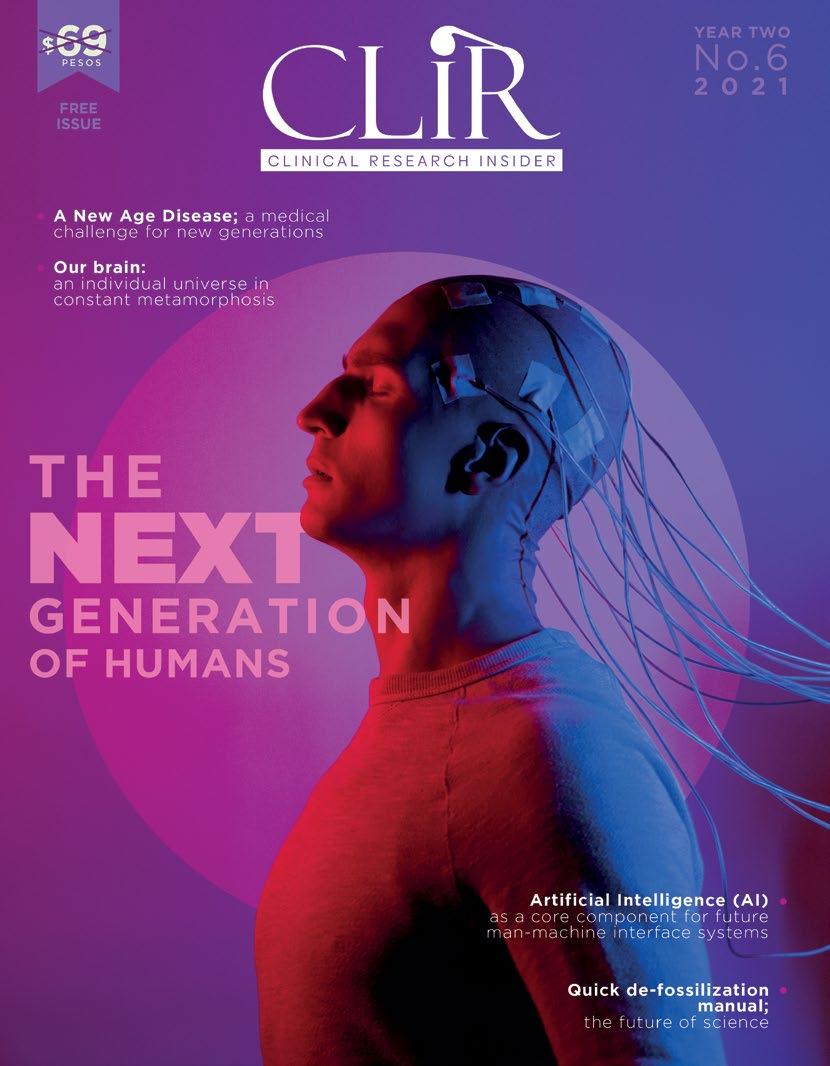

THE NEXT GENERATION OF HUMANS
WHO and the Swiss government to launch first global pathogen repository
Evidence indicates that the SARS-CoV-2 genome could integrate into human DNA · Carmen de la Rocha
Zero maternal deaths
Proposal to promote healthy nutrition in children and adolescents · Jennefer Mercado
THE EXPERT'S OPINION
Quo Vadis Homo Sapiens · Marco A. Cid
Quick de-fossilization manual; the future of science · Dante Alducin
EDITION ENQUIRY
Would you like your children to be part of the new superhumans thanks to genetic configuration?
INTERVIEW
Maternal health today; medical achievements and challenges. Interview to Dr. Juan Manuel Enciso Meraz
NEWS IN MEDICAL RESEARCH
Our brain: an individual universe in constant metamorphosis · Mauricio Hidalgo Ortega
Breastfeeding in the era of COVID-19 · Ana Villaseñor-Todd
NO.6
YEAR TWO MAY-JUN 2021
A New Age Disease; a medical challenge for new generations · Liliana Mora
RESEARCH
Should we talk aboutmaternal health? · Thor Nissen
How do new humans come into the world? definitions and introductory recommendations · David Maximiliano Ruiz Ortega
Artificial Intelligence (AI) as a core component for future man-machine interface systems · Guillermo Caletti
LET'S TALK ABOUT CANNABIS
Generalities, types, and differences between Cannabis seeds · Raúl Porras Gutiérrez de Velasco et al.
INTERVIEW
Myths and truths about breast cancer · Interview to doctor Emilio Murillo Enciso Meraz
BUSINESS & DEVELOPMENT
World’s first exoskeleton for children with Spinal Muscular Atrophy · Jennefer Mercado
A brain implant capable of writing thoughts · Carmen de la Rocha
Potential bone marrow stem cell treatment for patients with type 2 diabetes mellitus · Jocelyn Robles
CLINICAL RESEARCH & PHARMACOLOGY
Nitrosamine: a public health issue · Marleby García González
GADGETS
Virtual Reality: science fiction is more real than ever · Mauro Orozco

REVIEW
Going through motherhood: Linea nigra and La hija única · Orígenes Romero Porras
ART & LITERATURE
“Darker nights” · Piero Ramos Rasmussen
EDITORIAL
CONTENT
LATEST NEWS
CLIRTOON 3 4 4 5 5 6 7 12 14 22 22 22 28 30 34 40 50 55 55 55 58 60 63 64
• DIRECTION
GENERAL DIRECTOR
Marco A. Cid
EXECUTIVE DIRECTOR
Ivette Venegas
•EDITORIAL EDITOR IN CHIEF
Carolina Villanueva
• STYLE CORRECTION
Carolina Villanueva
Pavel Moreno
• GRAPHIC DESIGN
Óscar D. Cisneros Estrada César A. Pérez Valencia
•TRANSLATOR
Pavel Moreno
•COMMERCIAL COMMERCIAL DIRECTOR
Ivonne Cid
COMERCIAL MANAGER
Jorge Castro
PROMOTIONS
MANAGEMENT ADVERTISING
Antonio Padua
MARKETING
Marco A. Limón del Toro A. Carolina Quintanilla Kanter
•COLLABORATORS
Carmen de la Rocha
Jennefer Iveth Mercado
Jocelyn Robles
Marco A. Cid
Dante Alducin
Juan Manuel Enciso Meraz
Mauricio Hidalgo Ortega
Ana Villaseñor-Todd
Liliana Mora
Thor Nissen
David Maximiliano Ruiz Ortega
Guillermo Caletti
Raúl Porras Gutiérrez de Velasco
Izaizel Libertad Cruz Gómez
Alejandra Nayeli De Olarte Carbajal
Emilio Murillo Ramírez
Marleby García González
Mauro Orozco
Orígenes Romero
Piero Ramo Rasmussen
Rick Ruíz-Dana
CLiR Clinical Research Insider, year 2, no. 6, May-June 2021 is a trademark of CRPS, Clinical Research
STAFF DIRECTORY
Professional Services, LLC. All rights reserved. CLiR Clinical Research Insider is a bimonthly publication, published in Calle Volcán Popocatépetl No. 3352, Colli Urbano, Zapopan, Jalisco, C.P. 45070. Tel. 33 20 02 86 97. Website: clirinsider.com. Editor in Chief Carolina Villanueva López, email: carolina.villanueva@cidvid.com.mx. Reservation of Rights to the Exclusive Use: in process. ISSN: pending at the National Copyright Institute. Title and Content Lawsuit: pending. The content of the articles and advertising is the responsibility of their authors and sponsors. CLiR Clinical Research Insider is not responsible for the information in the advertising content. Prices shown in this publication are for information purposes only and are subject to change. Printed at Impre·Jal, Jalisco, México, Distributed by MILENIO and REFORMA. This issue went to press in June 2021 with a run of 35,000. Advertise on Clir insider! Contact: antonio.padua@cidvid.com.mx Cel: (33) 3250 6078 Clinical Research Insider www.clirinsider.com facebook issuu linkedin
Alfa, the generation of the future
When the foundations of a fortification are unstable, the structure loses its balance, and then, it collapses. With human life, it happens the same. The continuity of our species lies in a kind of genetic chain where the thread of life is gestated and sustained through the mother's womb, thus, ensuring the beginning of life in optimal conditions is extremely important for the future of the species.
Because of the dramatic events caused by the pandemic, we are currently experiencing an intensified uncertainty, created by our human condition. Nevertheless, this has not been entirely negative, as both maternal health and the study of everything that surrounds the next generations of humans have emerged as areas of great interest in both clinical and medical practice.
We are facing a paradigm shift in all human structures: the generations that will lead the new world are rising now and in the coming years. The way humanity is being cared for, educated, and even modified at the molecular level is decisive in determining the course that awaits us as a society. Likewise, new challenges will be revealed to test the species' ability to adapt to its environment, as well as the tools at its disposal. To take this into account, around 2.5 million Alphas are born every week worldwide: the first generation of digital natives.
The perpetuity of our species would be dangerously compromised without scientific efforts to ensure the emergence and proper development of new generations. Fortunately, the interest in health is still alive, and on the contrary, there are increased medical and technological advances ensuring our health and quality of life. Thus, reducing the figures of maternal mortality and New Era diseases by implementing care protocols and good clinical practices has become one of the major health goals of all modern nations.
Although human reproduction may seem to occur naturally, it is necessary to visualize all the risks that the beginning of life represents, both for mothers and future human beings. Therefore, there is a need to go deeper into the subject and to understand all the factors that affect the complications of pregnancy, the health of the newborn, and the potential adverse outcomes of gestation, as well as the environment of the future women and men of the future. At CLiR we are to serve as an informative force in the face of confusion and conundrums, and able to perform advances and discoveries in human affairs.
Science, technology, and human ingenuity are the bridge to the future; let us continue to build it with modern foundations.
Carolina Villanueva, EIC Editor and content creator with a Degree in Hispanic Literature.

3 EDITORIAL | EDITORIAL
«I believe that the future of humanity is in the progress of reason through science»
–Émile Zola
On May 24, 2021, the Swiss Confederation and the World Health Organization signed an agreement to implement the first pathogen repository established by the WHO, belonging to the “BioHub” system, which will be located in a laboratory with the required biosafety infrastructure in the city of Spiez, Switzerland.
This repository will aim to characterize and store pathogens in secure conditions, and then, share them with affiliated members to ensure the flow of information because, as Dr. Tedros Adhanom Ghebreyesus, Director of WHO said, “The COVID-19 pandemic and

Source: https://www.who.int/es/news/
EVIDENCE INDICATES THAT THE SARS-COV-2 GENOME COULD INTEGRATE INTO HUMAN DNA
WHO AND THE SWISS GOVERNMENT TO LAUNCH FIRST GLOBAL PATHOGEN REPOSITORY
other outbreaks and epidemics have outlined the importance of rapid sharing of pathogens to help the global scientific community assessing risks and develop measures to control diseases, such as diagnostics, treatments, and vaccines”.
This collection will allow humanity to be more prepared in the event of a new biological threat, as well as to understand and fight current ones more efficiently, since there will be access to a larger number of strain research groups, for a better and greater understanding of them.
Researchers from the prestigious Massachusetts Institute of Technology (MIT) published in the scientific journal Proceedings of the National Academy of Sciences (PNAS), a study supporting the hypothesis that a human enzyme could integrate fragments of viral RNA into the human genome by reverse transcription, a mechanism by which RNA can be transcribed but in the form of DNA.
The scientists showed copies of SARS-CoV-2 DNA in cultured infected human cells, however, the authors warn that more evidence is needed to prove their hypothesis, as they believe that these findings may be due, in some measure, to the molecular detection technique itself.
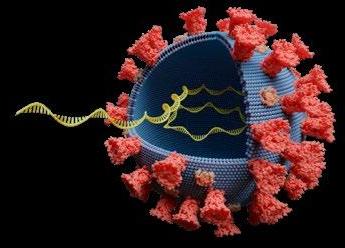
Written by Dr. Carmen de la Rocha. D. in Plant Biotechnology, CINVESTAV-Irapuato - Master of Science in Biochemical Engineering, ITC – Bachelor of Science in Nutrition and Food Science, IBERO, LeónSupervisor of the Department of Development CidVID - Professor of Subject B, CUCS UdeG Member of the National System of Researchers, level I.
Source: Zhang L, Richards A, Barrasa MI, Hughes SH, Young RA, Jaenisch R. Reverse-transcribed SARS-CoV-2 RNA can integrate into the genome of cultured human cells and can be expressed in patient-derived tissues. Proc Natl Acad Sci U S A. 2021;118(21).
4
| LATEST NEWS
PROPOSAL TO PROMOTE HEALTHY NUTRITION IN CHILDREN AND ADOLESCENTS
Children go through several physical, psychological, and biological factors during their transition from childhood to the adolescent stage; for this reason, health experts propose to promote a healthy dietary pattern. It has been scientifically proven that for a child to accept a new type of food, it can take up to 10 meals for his/her brain to assimilate it and begin to create a positive habit. Having this in mind, they propose several strategies to reduce the risk of becoming overweight and obese, as well as developing further chronic degenerative diseases, such as type 2 diabetes or cardiovascular disease.
Among the strategies that nutrition experts have recommended are:
Shared meals: during the first stage of life, shared meals have a great impact on the development of healthy habits and dietary practices. Making nutrient-rich foods and beverages part of the normal household mealtime routine helps children engage in healthy behaviors.
Snacks: nutrient-rich snack foods, such as fruits or vegetables help contribute to a healthy diet for children.
Food decisions: adults should involve children in age-adequate meal decisions, as well as in food shopping and preparation.
Beverage selection: decreasing and/or avoiding sugar-sweetened beverages in children will help to achieve a healthy dietary habit.
Source: Dennis Anderson Villaluz. (2021, March). Giving Children and Adolescents a Healthy Start Through Nutrition. Oficina de Prevención de Enfermedades y Promoción de La Salud. https://health.gov/news/202103/giving-children-and-adolescents-healthy-startthrough-nutrition
ZERO MATERNAL DEATHS
From conception to delivery, the health of mothers is as important as that of their babies; pregnant women face risks that can be fatal to both themselves and their infants. The main causes of maternal death in Latin America and the Caribbean are: hypertension induced by delivery 23%, hemorrhage (bleeding) 22%, and abortion complications 8%. Of every 5 maternal deaths, one or more are due to hemorrhage; mothers with multiple pregnancies, previous cesarean sections, birth trauma, or women older than 35 years are more prone to postpartum hemorrhage.
Almost all maternal deaths are preventable, which is why the Pan American Health Organization/World Health Organization (PAHO/WHO) and the Latin American Center for Perinatology/Women's Health and Reproductive Health (CLAP/SMR) have carried out the "Zero Maternal Deaths" project in order to reduce a
 Written by Jennefer Iveth Mercado Cerda.
Written by Jennefer Iveth Mercado Cerda.
large number of obstetric deaths as the leading cause of maternal deaths.
This project seeks to save the lives of mothers and prevent the consequences of their loss for families and the development of countries. Therefore, health services were strengthened by removing access filters and providing training to staff to manage an obstetric hemorrhage, the availability of blood for transfusions, and access to medicines at the time of delivery. The "Zero Death from Hemorrhage" project seeks to empower women, so they are aware of their rights, idiosyncrasy, and that they are not ashamed to seek qualified medical assistance. It also looks to promote family planning actions, ensure the newborn, to have an adequate cutting of the umbilical cord three minutes after birth, and promote breastfeeding.
Source: WHO. (2021). Cero Muertes Maternas - PAHO/WHO | Pan American Health Organization. Report: https://www.paho.org/es/cero-muertes-maternas
5 LATEST NEWS |
Student of the Master of Public Health, Bachelor of Public Health, Researcher in the Department of Development at CidVID.
Marco
QUO VADIS HOMO SAPIENS
A. Cid, Director

Chemist-pharmacist from La Salle University, MBA from ITESO and a senior management degree from the IPADE Business School. Expert in medical research and development, entrepreneur and founder of several non-profit and for-profit associations; he us also the creator of a private investment fund.
When we find ourselves trying to discover our purpose in life, we realize that we know not so much about ourselves. It has been difficult to understand how we developed as modern humans, who our real ancestors were, whether there was another kind of Homo sapiens on Earth... These questions have been asked by great figures in the field of evolutionary biology, such as Jared Dimond or Yuval Noah Harari, who have developed relevant theories in the scientific community about our remote past, even though not a single one can answer where we came from.
While it is said that we have only discovered 10% of our ancient civilizations, I believe indeed that it will take us at least 50 more years to find a "Rosetta Stone" that will provide us the next step in the discovery of our ancestors. It is hard for me to accept that we were designed by linear evolution through time. When I see the marvel that our organisms are, I realize the complexity of our creation and reproduction, however, my greatest amazement lies in the fact that we are unrepeatable. Thus, the fascinating phenomenon called Homo sapiens is destined to discover and understand itself as a fundamental piece of this infinite universe.
It is now up to us to understand the great human machinery and begin to optimize it so that, in the years to come, we can enjoy prolonged longevity, disease-free lives, and laboratory-created organ replacements to reach the ultimate goal as a species: to breed gifted humans.
The future is uncertain, but the chances of a prosperous future lie in the actions that are being implemented today. Although there is nothing more uncertain than the human future, science is manifesting itself to ensure the well-being of the new generations of species. As proof of this, we have witnessed the great steps that have been taken with the development of gene-editing techniques, such as CRISPR/Cas9, named by contemporary scientists as the threshold for human perfection, knowing that within this new game called Divinity, there are still some mysteries in the air, such as what awaits the generations that were not edited, what privileges will the new humans have, or will we all be equal in the eyes of God?
Time is running short because a society must face new challenges; artificial intelligence plays a role against the creation of the superhuman; soon, beings edited or replaced by machines will fight endless battles to define which entity will be the one to rule the new world order.
Where are you going Human? Or where are you coming from? What should we answer first…

6
| THE EXPERT'S OPINION
QUICK DE-FOSSILIZATION MANUAL; THE FUTURE OF SCIENCE
“I loved Guardians of the Galaxy! the movie has a lot of details and toys from when I was a kid.”
I was bored to death in the same meeting room along with these two colleagues and I said to myself: Of course! they know exactly their audience, this film is the result of the most sophisticated creativity, special effects, and specifically, neuroscience. They know which buttons to push to arouse affinity and, please, don’t get me wrong, I liked the movie, but I am aware of everything behind it.
Every day I check my social media contacts nostalgically posting about this or that 80s series, recalling how things were better before, and complaining about how much they loathe the new generations. There seems to be no major background to this issue, except that they are, or rather, we are in a process of "technological and judgment fossilization". All generations complain that their predecessors are worse and that their successors are at the edge of disaster; this is nothing new and has been going for centuries. Each generation had, in its time, positive and negative issues, but in time, only the positive ones are to be remembered. If someone in the 19th century complained that the previous century was better, there were not so many repercussions, because society moved in a much more isolated and slower way. But to be nostalgic in the 21st. century is foolish. Why? Because we are on the verge of a gigantic technological revolution, in all aspects, and there is no turning back. This impacts all aspects of our lives.
Think about the consequences: How you can work efficiently with younger people if you are prejudiced and don't try to understand them? Your job depends on it. There is a paradox that makes me laugh; almost everyone I ask tells me that they like to learn. What I truly see is that they like to collect papers and call themselves educated. I am also not the first one to say it; Confucius had already reached the same conclusion in ancient China.
Learning is seeing the world with other eyes, seeing with humility the good things and the potential of everything. How can we really learn if we are stuck in the old fashion? We all tend to be in this constant process of fossilization; this is natural because we are getting older. But curiosity and a true desire to learn are what will allow us to escape the passage of time and reach new horizons. I love having people of all ages in my team, but usually, those that surprise me the most are the younger ones. For instance, without them, I could not go further in my social media. If at this point you are thinking about why you need social networks, if you are serious, you'd better think twice. It is not just social media, it's the emerging technology.
In the next decades, most jobs will be subject to artificial intelligence automatization. This means that, no matter what you do, it will be impacted by technology in some way; your traditional way of operating has its days numbered whether you like it or not. If you add to that the perpetual nostalgia and apathy for learning new things, then you will be at a disadvantage. At this point, I give you some advice: learn complementary skills that can impact your industry, especially if you have nothing to do with them and you are something like a biologist, lawyer, writer, etc. Skills like: Machine Learning, Big Data, programming... Not only will they be useful to keep you on the top of the wave and guarantee you a better salary, but they also help you to create new neuronal networks and set your sights on the future.
Embracing the future is not something exclusive of visionaries like Elon Musk or Steve Jobs. Anyone with an open mind can do it, you just need to be willing to learn. We cannot stop our bodies from aging (for now), but we can keep our minds forever young, looking forward to a bright future.
Dante Alducin
Q.F.B. with the Specialization in Leading People and Teams program by the University of Michigan. He has 12 years of experience in Clinical Research. Founder of Blast! Academy and host of the Ruido Blast! podcast.

7 THE EXPERT'S OPINION |
Would you like your children to be part of the new superhumans using genetic configuration?
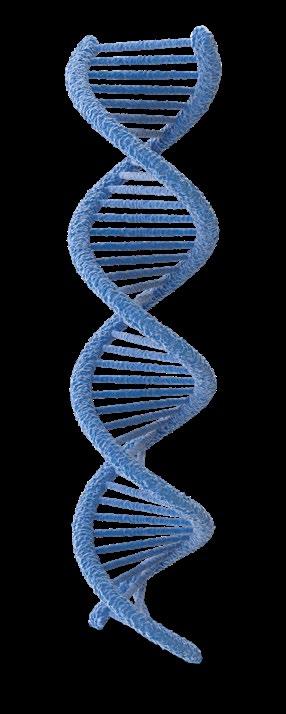
YADIRA FERNÁNDEZ LARA
Yes, I would like to because my children would be stronger and healthier
ALONDRA HERNÁN
Yes, because it would help to prevent diseases
ORÍGENES ROMERO
That’s the way Sci-Fi movies start...
RUTHIS JOLIE
And with the vaccines theories... They would die before improving
MELINA CONDE
Yes, so that my children will be less ill
JESSICA DE LA FUENTE
It is extraordinarily complex to decide, first, we would have to perform experiments on other living beings
PALOMA CASTRO Eugenics?
GAMARRA ISUIZA ISABEL
Of course, because that would eliminate the diseases that have been transmitted for generations
8
EDITION INQUIRY SOCIAL MEDIA RESPONSES
Maternal health today; medical achievements and challenges
Interview to Dr. Juan Manuel Enciso Meraz. Is a gynecologist and obstetrician specialized in fetal-maternal and surgical medicine. He holds a Fetal Medicine Foundation Certificate and a Certificate from the Mexican Board of Gynecology and Obstetrics; he is a member of the International Society of Ultrasound in Obstetrics and Gynecology. A former head of the Fetal Medicine Unit from the CMNO Hospital of Gynecology and Obstetrics.
One of the main objectives of clinical research is the creation of useful generalizable knowledge. Its purpose is to resolve the questions about diseases that afflict humanity and aims to solve the lack of certainties responsibly and rigorously, with quality data and respect for the individuals involved in the study. Few of them, however, are designed to address relevant questions of interest for pregnant women.1
Dr. Juan Manuel Enciso, according to your extensive experience in maternal-fetal medicine and considering further research that could be performed in the field, WHAT ARE THE BENEFITS THAT PREGNANT WOMEN COULD OBTAIN BY ENTERING A CLINICAL TRIAL?

The patient benefits from enrolling as she will receive better medical care including tests and studies, in greater quantity, quality, and in less time than the usual care. Another important point is that these interventions usually do not generate costs, as they are absorbed by research centers and foundations. In addition, in the medium and long term, there is the potential of positive results and that the treatment and benefits will be received before the population, and without any fees. Participating in trials also implies a benefit for the society, since it is possible for the patient to help other patients to obtain better management and thus, improving the population quality of life. Likewise, by participating, support groups are formed, which provide constant information about the pathology, allowing the shaping of closer doctorpatient and patient-patient bonds, and granting for greater emotional support.

INTERVIEW |
INTERVIEW
Dr. Juan Manuel Enciso Meraz
The interview was generated by the publishing house of the Clinical Research Insider.
A relevant study that I can cite is the MOMS (Management of Myelomeningocele Study), carried out in 2011, in which pregnant patients with an infant with open spinal defect were invited to participate in order to perform an intrauterine surgery or an intervention once the infant was born. The study had such good outcome with fetal surgery that it had to be stopped because the benefit was so great that it was ethically not possible to continue operating on the defect until birth, establishing a change in the paradigm of treatment of fetuses with myelomeningocele, as the gold standard in the management of this pathology.
In the same vein, WHICH ARE THE ETHICAL ISSUES INVOLVED IN CLINICAL TRIALS IN PREGNANT WOMEN, WHAT SHOULD PARTICIPANTS BE AWARE OF BEFORE ENTERING ONE?

Invariably, before initiating a research protocol, an ethics committee has to grant its approval to start the study. This means that a group of people from different specialties, and even from different professions are aware of the benefits, risks, and the whole theoretical context presented by the researchers, such as results in animal models, complications, adverse effects, etc. Through this information, the committee can pronounce a judgment. In other words, it is impossible to initiate a clinical trial without the approval of the ethics committee.
Whenever a patient participates in a protocol, she is given a document that informs her of the potential benefits, as well as the adverse effects, risks, forms of management, interventions, and even whether it will be necessary for the patient to remain close to the care unit. It is important to clarify that the patient can refuse to participate in the study at any time and that she will always have a physician responsible for her care, as well as the telephone number of the physician.
10
| INTERVIEW
After having provided care to countless pregnant patients, WHAT ARE THE DRUGS OR TREATMENTS YOU RECOMMEND FOR THE PROPER DEVELOPMENT OF INFANTS DURING PREGNANCY?
The World Health Organization recommends the use of 0.4 mg of folic acid from three months before conception, as it prevents neural tube defects, as well as adding 30 to 60 mg of elemental iron once pregnancy is established to prevent low birth weight, prematurity, maternal anemia, and even sepsis. It should be highlighted that alcohol consumption should be discontinued as there is no "safe" amount to consume since it can cause neurotoxicity and thus, reduced intellectual and motor performance. Patients who are chronically hypertensive or with epilepsy should consult with their physician about changing medications that are considered safe during pregnancy.
As is well known, all pregnancies involve some health risks, however, ARE THERE DISEASES DIRECTLY ASSOCIATED WITH POORLY CONDUCTED PREGNANCY?
Prenatal consultation is important, which provides time to correct previous maternal disorders, or even to be able to change to safer drugs during gestation. Obstetric care is individualized in each case since there are national and international standards that dictate the weeks at which patients should be screened to have a better maternal and perinatal outcome. It is important that the structural review be performed by a maternal-fetal physician These reviews
are carried out from week 11 to 14, after week 18 to 24, and finally, in the third quarter of pregnancy.
Level II or structural screening allows the diagnosis of malformations, deformities, disruptions, sequences, associations, as well as establishing the risk for chromosomal alterations such as Down syndrome, prematurity, and preeclampsia. In case of chromosomal alterations, invasive or non-invasive procedures will be established jointly with the patient in order to be certain of the diagnosis. In the event of finding a structural defect, a management plan, prognosis and, in some cases, fetal surgery will be established. So, comprehensive care can be offered, minimizing maternal and/or fetal risks.
Keeping in mind the thalidomide tragedy, which occurred in the late 1950s, when more than 10,000 infants born to mothers who consumed this drug during pregnancy were born with severe irreversible malformations, WHAT MEASURES HAVE BEEN IMPLEMENTED IN THE WORLD OF CLINICAL RESEARCH TO AVOID SIMILAR MISFORTUNES?
Thalidomide was a drug used for nausea that caused a large number of malformations (phocomelia). Following this unfortunate event, reforms were made to clinical testing of drugs, which impose strict limits on the tests and distribution of drugs, establishing that efficacy must be determined before marketing. There are different organizations such as the FDA (United States Food and Drug Administration) and COFEPRIS (Mexican Federal Commission for the

11 INTERVIEW |
Protection against Sanitary Risks) which, together with those responsible for public health, guarantee the safety and efficacy of drugs, biological products, medical devices, food supply, cosmetics, dietary supplements, and radiation-emitting products.
FINALLY, WHAT IS THE GREATEST CHALLENGE CURRENTLY FACED BY PHYSICIANS AND HEALTH CARE PROVIDERS IN THE FIELD OF MATERNITY AND PUBLIC HEALTH?
COVID-19 is undoubtedly the issue, as it is currently the leading cause of maternal death in Mexico, surpassing preeclampsia, and obstetric hemorrhage, which have been the main causes of death before the pandemic. This represents a great effort on the part of institutions to be able to provide adequate and timely care to avoid complications. However, due to the nature of the pandemic, it will be necessary to consider vaccinating pregnant women as soon as information on the safety of vaccination is available since this group is undoubtedly at risk.
Given the prevalence of obesity and its association with hypertensive disorders of pregnancy and gestational diabetes, it is necessary to take the relevant measures to reduce the potential of presenting these pathologies that confer a high risk of unfavorable outcomes. These include changing the concept of the traditional diet based on high carbohydrate content, encouraging routine exercise, and carrying out universal prenatal monitoring in order to identify mothers at risk of preeclampsia and initiate timely treatment and follow-up, as well as to detect fetuses at risk of chromosomopathies, prematurity, altered growth, malformations, and, in the latter, to be able to carry out, in some instances, intrauterine treatment, or to bring both the mother and fetus in optimal conditions for a safe birth.
Finally, WHAT HAVE BEEN SOME OF THE MOST RELEVANT ADVANCES IN THE HISTORY OF MODERN MEDICINE IN TERMS OF CLINICAL RESEARCH AND MATERNAL HEALTH?
Several events have changed the management of fetal medicine; previously, mothers with Rh-negative hemotype, who already had antibodies against the positive fetal blood type, had amniotic fluid extracted through an abdominal puncture to assess the degree of anemia. Nowadays, the diagnosis is made through a non-invasive test, performed by ultrasound in a modality described as doppler of the middle cerebral artery of the fetus, allowing to accurately determine if the fetus is anemic.
Another great advance is fetal surgery, which allows improving the prognosis of several malformations, as well as the quality of life, e.g., the separation of placentas by laser in fetal-fetal transfusion, a pathology characterized by sharing placental circulation in a twin pregnancy, which significantly improves the potential of life of both fetuses with no neurological sequelae.
12
| INTERVIEW
1. Salmún, D. (2019). Investigación clínica en el embarazo: un llamado a participar en el cambio de paradigma – Parte l. Revista del Hospital Materno Infantil Ramón Sardá. 2(4). Retrieved from: http://www.sarda.org.ar/images/2019/2019-2_1_Editorial.pdf
2. As of February 15, 2021.
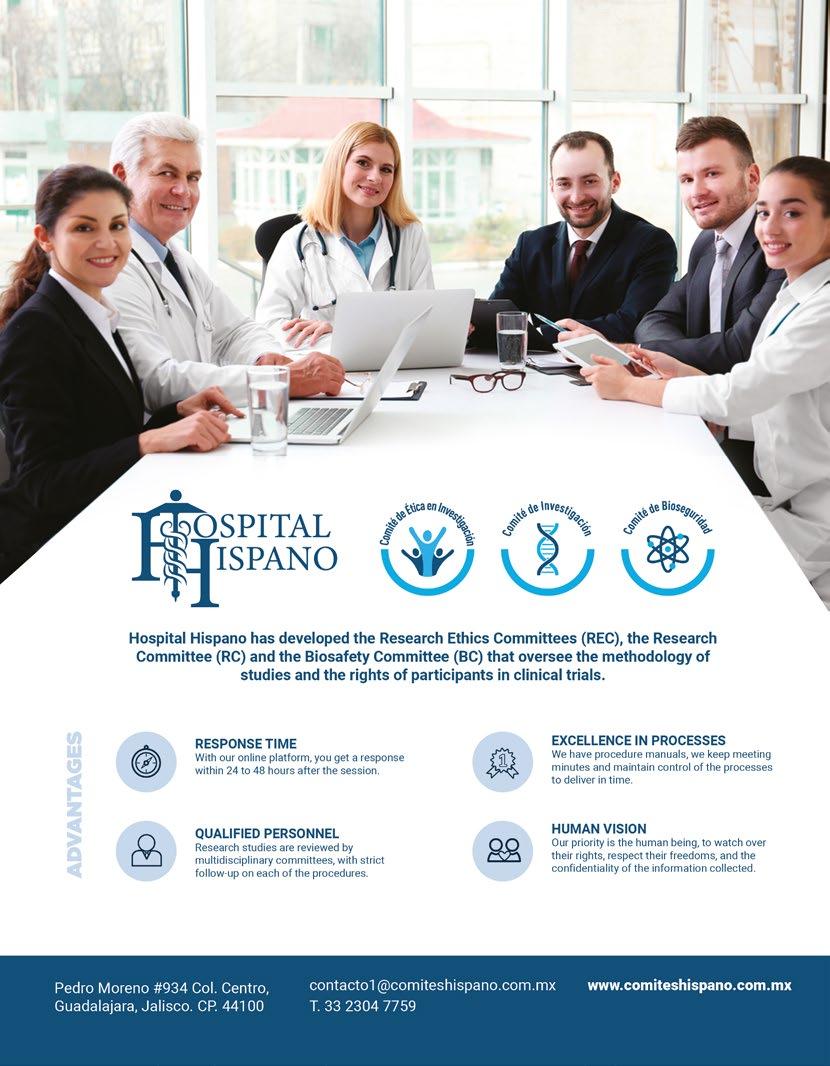
OUR BRAIN: AN INDIVIDUAL UNIVERSE IN CONSTANT METAMORPHOSIS
We, living beings, are robust systems with a series of emerging properties giving substrate to such robustness. We have both structural and functional redundancy, allowing us to modify or replace certain elements or interactions from one moment to the next. On the other hand, we have error prevention, reduction, and correction mechanisms, an important and determining aspect of the strength of a biological system, and a sine qua non-characteristic for the evolutive success of living organisms.
These characteristics are of enormous value since they allow us to respond adaptively and predictively to changes in the environment, given the potential of recording stimuli, storing, and using them to elaborate the best possible predictive adaptive responses to new environmental demands. In this scenario, memory, perception, and learning result critically since they "dwell" in our brain, an extremely flexible organ that allows constant metamorphosis. In this Kafkaesque landscape, epigenetic mechanisms, which include DNA methylation, histone post-translational modifications, and noncoding RNA molecules, are involved in the regulation of gene expression, cell differentiation, and development in almost all tissues, including, of course, our brain, where epigenetic mechanisms show their greatest variability and diversity. These epigenetic brain mechanisms (neuroepigenetic) are critical for higher cognitive functions such as memory and learning. Thus, it is not surprising to find that the deregulation of such epigenetic processes is related to different neurodegenerative disorders and conditions.


14 | NEWS IN MEDICAL RESEARCH
Mauricio Hidalgo Ortega
Bachelor's degree in Biological Sciences from the Pontificia Universidad Católica de Chile. PhD. in Biology by the Universidad de Chile. Independent researcher in Biopsychosocial Epigenetics and Neuroepigenetics.
BRAIN PLASTICITY AND NEURODEVELOPMENT

The development and maturation of our brain are exquisitely regulated processes that begin during embryogenesis and continue to varying degrees until late in life. Our brain never stops changing! Thus, after birth, during the first years of life and adolescence, a blast of new intraneuronal connections (synaptogenesis) is observed, followed by the elimination of a large number of synapses (synaptic pruning). , , This dynamic structural remodeling of synapses and neural networks can be interpreted as the structural manifestation of brain plasticity dependent on experience memory and learning, and the alteration of these processes can trigger several behavioral disorders or neuropsychiatric disturbances.
Advances made in recent years in the field of neuroscience have allowed us to overturn long-held beliefs about our brain. For example, we assumed that the adult brain was a structure unable of carrying out significant structural remodeling processes. This belief assumed that there was no neurogenesis in the adult brain and that all structures of the nervous system, and especially, the synapses, had formidable stability, with little potential of structural dynamism. However, the vision of our brain has undergone an evolution almost impossible to have anticipated a few decades ago, it changed dramatically to the point of recognizing today the existence of huge flexibility in both terms of structure, as well as neuronal function in the adult brain. Nowadays, we recognize as an unobjectionable fact the existence of neurogenesis in the adult brain, just as we now acknowledge that neurons and synapses undergo different forms of structural remodeling, underlying structural and functional plasticity, allowing deep changes in the intimate cerebral structure. Undoubtedly, this formidable brain plasticity has a relevant adaptive value, resulting from a complex and reciprocal relationship between structure, stimuli, and memories.6
NEWS IN MEDICAL RESEARCH |
NEUROEPIGENETICS

Brain is a superb organ in both plasticity and diversity, containing many interconnected neuronal and non-neuronal cell types (glia or synneurons ) with unique functions, which undergo coordinated development and maturation in space and time. Neurons are postmitotic cells with an extremely long lifespan that, nevertheless, adapt and respond rapidly to highly changing environments, while maintaining their hemostatic state and undergoing further functional specialization. In these terms, gene expression has been shown to underlie synaptic and neuronal activity and is regulated by a range of epigenetic mechanisms, some of which are almost absent in other types of cells and tissues of the body.8
Results indicate that the different epigenetic modifications of the brain occur as a consequence of the several environmental stimuli it receives, establishing a bidirectional (reciprocal) relationship, enabling an almost infinite myriad of results, evidencing its complex and dynamic nature, which evolves without a rigorously pre-established path. In this complex scenario, the activation or silencing of genes controlled by epigenetic mechanisms represents that crosstalk that emerges from the perturbation of the structure towards energy (stimuli), within a contextual environment that evolves as a result of new solutions, a constructive/destructive interference capable of modifying and regulating synaptic potential, memory, and learning.
A UNIVERSE OF POSSIBILITIES
Among epigenetic modifications, DNA methylation corresponds to how our DNA is epigenetically modified, and initial studies focused on the canonical form of methylation, which belongs to methylation of cytosines followed by guanines (CpG). This is the predominant form of DNA methylation in most cells and tissues studied. However, the brain shows an almost inexistent variety in other cell types, giving the brain tissue an epigenetic richness, allowing the regulation of brain gene expression, a complex and diverse mechanism, enabling a huge range of "solutions" to the different stimuli we face every day.
Thus, the neuronal methylome (methylated neuronal DNA) is especially diverse, being not only the tissue where we observe the highest levels of oxidation of methylated CpG sites, but also the tissue where we find the highest percentage of methylations in non-CpG sequences (CpH; where H represents
16
| NEWS IN MEDICAL RESEARCH
other nitrogenous bases – Adenine, Cytosine, or Thymine). It seems that DNA methylation could be compared to a language of several colored flags, where each color and pattern of colors fulfills a specific function, with non-CpG methylation being more flexible and subject to editing dependent on the changing stimuli we experience daily. Indeed, for this to work in the manner proposed, the synaptic activity would have to be associated with neuronal nucleus activity, and that is what actually occurs.
Currently, there is a full consensus that experience-dependent plasticity is activated when neuronal excitation stimulates cell signaling pathways from the synapse to the cell nucleus, impacting the expression of different genes involved in processes linked to learning and memory. In this scenario, neural activity can strengthen or weaken synaptic networks by weighting existing circuit connections, while changes can create new neural connections, interlinking with each other like nodes in a three-dimensional/dynamic system with a large capacity of interconnections (alternative paths), allowing robust solutions to unpredictable situations.
SOMATIC MUTATIONS: A WORLD OF UNEXPECTED POSSIBILITIES
Somatic mutations can arise as single nucleotide substitutions, transpositions, insertions, deletions (including copy number change), and aneuploidies. These events appear randomly and are potentially caused by a range of different mechanisms. Some of the mutational mechanisms may developmentally specific while others may constantly add new mutations throughout life in a clock-like fashion. The rate and propensity of somatic mutations may also differ between genes and gene sequences.9 Interestingly, despite the assumption that such mutations are stochastic, new evidence points to the fact that some somatic mutations may be "programmed", as in the case of somatic hypermutation involving immunoglobulin genes in B-lymphocytes.10
Similarly, DNA methylation is unique among the other epigenetic mechanisms impacting the chromatin structure, since cytokine methylation carries an unknown evolutionary consequence,

17
NEWS IN MEDICAL RESEARCH |
accounting for the existence of increased mutability. For example, the rate of point mutations (SNPs) from cytosine to thymine (C>T), by deamination, is 10 to 50 times higher in methylated cytosines.11,12 An observation that goes hand in hand with increased mutability is that genomes with DNA methylation, in general, show a depletion of CpG dinucleotides, reflecting the occurrence of DNA methylation-induced mutations. This background has led some researchers to hypothesize that plastic variation (phenotypic plasticity) may foreshadow genetic variation, which, in turn, may contribute to the genomic fixation of environmentally induced traits in subsequent generations. In other words, it seems that our experience would not only impact our brain epigenome but could be fixed as mutations.13
There is increasing evidence that each brain is a unique myriad representing a population of genetically different cells.14 In short, our individual diversity resides in our cerebral individuality.
References:

1. PETER R., H. Synaptic density in human frontal cortex — Developmental changes and effects of aging. Brain Research, 163(2), 195–205. (1979). doi:10.1016/0006-8993(79)90349-4
2. GIEDD, J. N., BLUMENTHAL, J., JEFFRIES, N. O., CASTELLANOS, F. X., LIU, H., ZIJDENBOS, A., Y RAPOPORT, J. L. Brain development during childhood and adolescence: a longitudinal MRI study. Nature neuroscience, 2(10), 861-863. (1999).
3. URBÁN, N., AND GUILLEMOT, F. Neurogenesis in the embryonic and adult brain: same regulators, different roles. Cell. Neurosci., vol. 8, (2014). doi: 10.3389/fncel.2014.00396
4. ZHAO, X., VAN PRAAG, H. Steps towards standardized quantification of adult neurogenesis. Nat Commun 11, 4275 (2020). https://doi.org/10.1038/ s41467-020-18046-y
5. STUCHLIK, A. Dynamic learning and memory, synaptic plasticity and neurogenesis: an update. Frontiers in Behavioral Neuroscience, 8(April), pp. 1–6. (2014).
6. LESLIE, JH AND NEDIVI. E. Activity-regulated genes as mediators of neural circuit plasticity. Progress in neurobiology, 94 (2011), 223-237.
7. DUQUE-PARRA, J. E., BARCO-RÍOS, J., & BARCO-CANO, J. A. (2021). El Término Glía, una Tradición Conceptual Errada: Propuesta de Cambio por Sinneuronas. International Journal of Morphology, 39(2), 638-641.
8. CAMPBELL, R. AND WOOD. M. How the epigenome integrates information and reshapes the synapse. Nat. Rev. Neurosci., 20 (2019), pp. 133-147, 10.1038/s41583-019-0121-9
9. HODGKINSON. A., AND EYRE-WALKER, A. Variation in the mutation rate across mammalian genomes. Nat Rev Genet. 12:756–66.(2011). doi: 10.1038/nrg3098
10. BRINEY, B.S., AND CROWE, J. E. Secondary mechanisms of diversification in the human antibody repertoire. Front Immunol. 4:42. (2013). doi: 10.3389/ fimmu.2013.00042
11. DUNCAN, B. K. AND MILLER, J. H. Mutagenic deamination of cytosine residues in DNA. Nature 1980 Oct 9;287(5782):560-1. doi: 10.1038/287560a0.
12. SVED, J., AND BIRD, A. The expected equilibrium of the CpG dinucleotide in vertebrate genomes under a mutation model. Proc Natl Acad Sci U S A. 1990 Jun;87 (12): 4692-6. doi: 10.1073/pnas.87.12.4692.
13. KUSMARTSEV, V., DROŻDŻ, M., SCHUSTER-BÖCKLER, B., & WARNECKE, T. Cytosine Methylation Affects the Mutability of Neighbouring Nucleotides in Germline and Soma. Genetics, genetics.303028.2020. (2020). doi:10.1534/ genetics.120.303028
14. SEKAR, A,, BIALAS, A. R., DE RIVERA, H., DAVIS, A., HAMMOND, T.R., KAMITAKI, N., ET AL. Schizophrenia risk from complex variation of complement component 4. Nature. (2016) 530:177–83. doi: 10.1038/ nature16549.
18
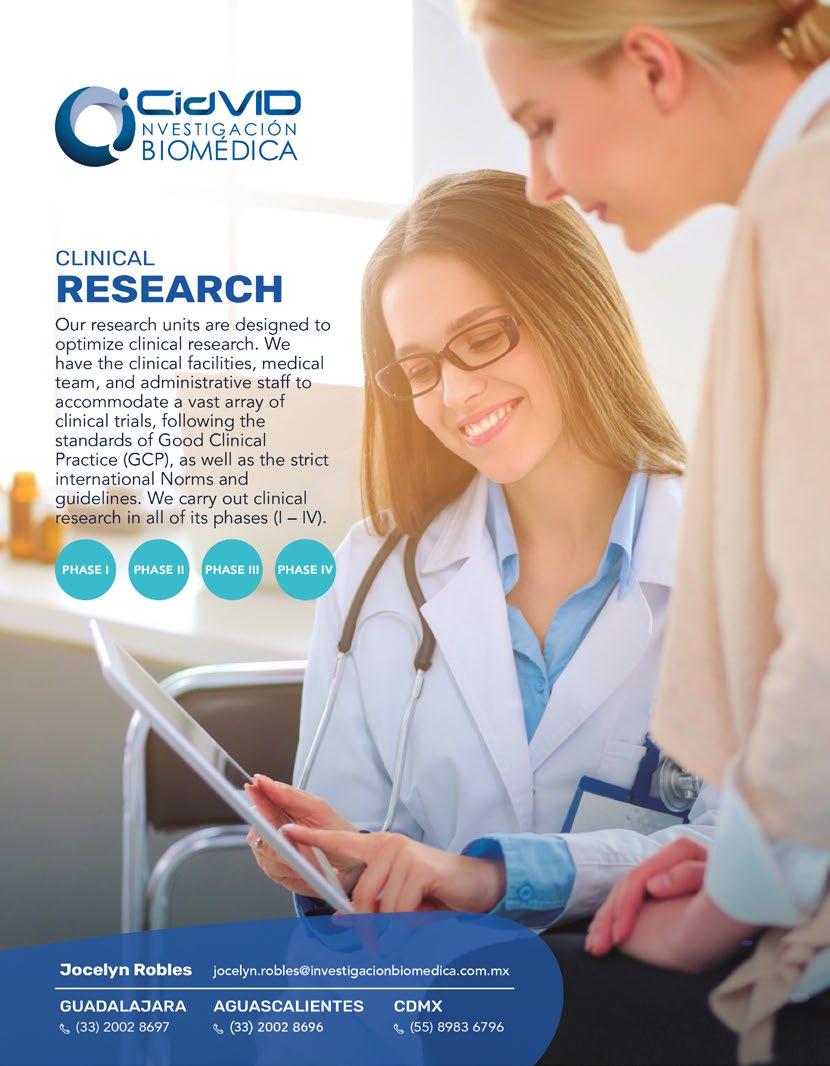
Dra. Ana Villaseñor-Todd
Mexican scientist recognized by her research on minimal hepatic encephalopathy, oxidative stress, quality of life, and social cognition. As a professional physician, she completed her postgraduate studies at Texas A&M University; currently, she is a candidate to receive the Medical Doctor degree by the UANL.

TECHNICAL COMMITTEE
Dr. Erika del Carmen Ochoa-Correa, Pediatrician, Neonatologist, Lactation Consultant, IBCLC (International Board-Certified Lactation Consultant). Dr. Xochitl DuqueAlarcon, Expert Psychiatrist in the study of effects of early experiences on emotional development.
BREASTFEEDING IN THE ERA OF COVID-19
The story goes that Hercules and his twin brother were sons of Zeus and the mortal queen Alcmene. Only Hercules inherited the semi-divine condition of his father. Zeus tricked his wife Hera by putting the baby to suckle from her breast to confirm his status of God and thus, granting him the formidable strength that characterized him. Hera took notice and removed Hercules from her breast. From the spurt of milk that came out, they say that the Milky Way was created in the sky.
Today, we know that the best food for infants is breast milk; according to the World Health Organization (WHO), it should be given exclusively until the first six months of life and supplemented with other food until 2 years of age or older. The first hours and days of a newborn’s life are the ideal time to establish breastfeeding and provide mothers with the support they need to successfully breastfeed their infants.1
Several factors affect the development of the gut microbiota in early life, among which breastfeeding plays a key role. Newborns adapt to the extrauterine environment through the development of intestinal immune homeostasis. Initial bacterial colonization is necessary for adequate intestinal immune development. An environmental determinant for proper colonization is breast milk. Although the term infant is capable of developing an immune response, the effector-immune component requires bacterial stimulation. Breast milk stimulates the proliferation of a diverse and balanced microbiota, which initially influences a shift from a predominant intrauterine TH2 response to a balanced TH1/TH2 response and with the activation of regulatory T-cells by specific organisms stimulated by breast milk (Bifidobacterium, Lactobacillus, and Bacteroides).2 The nutritional benefits that breast milk confers to the infant, such as digestion, prevention of infectious disease complications, and proper orofacial development, are incalculable and have been extensively studied. However, the effects on other variables, such as cognitive development, does not seem to be strongly related to the properties of the milk, but rather with the impact that the act of breastfeeding creates on the mother-child binomial, especially, the effect of “maternal sensitivity”, a concept of attachment theory, which refers to the mother’s ability to read the infant’s attachment signals and respond to them in a contingent and adequate manner, generating biological synchrony between the two.
20
| NEWS IN MEDICAL RESEARCH
HUMAN MILK IS SO IMPORTANT THAT MILKY WAY IS MADE OF IT
This synchrony, dependent on maternal sensitivity, is the main characteristic for the development of an affective bond described as a “secure attachment”. Scientists propose that this synchronization process between mother and child is reinforced during the act of breastfeeding, and that is the element that goes beyond the mere nutritional composition of the milk. For example, it is known that skin-to-skin contact, as well as gaze feedback between the two, creates a secretion of oxytocin that, in addition to acting physiologically for milk production, proceeds on certain parts of the mother's brain, such as the amygdala, regulating emotions and promoting a state of well-being. There a thousand physiological reasons to justify breastfeeding, but there is an extra ingredient that we have not mentioned, often expressed in a theme of pagan origins known as The Roman Charity (https://youtu.be/6JB7zA4l1m0), the main players are Cimon and Pero, described in the artistic account of Valerius Maximus.
Pero is a newborn woman, Cimon is her father, who was imprisoned and condemned to death by starvation; his daughter came every day to the cell to nurse him. The encounters would be eventually discovered, causing such admiration to the Roman authorities that the prisoner would be released, being an example of filial love and a symbol of charity. This scene has captivated painting and sculpture from the sixteenth to the eighteenth centuries on countless occasions by artists from all over Europe, and by Caravaggio. This extra element of breastfeeding, which some may play an important role in all the benefits of breast milk, was not included in the products created since 1865 known as Liebig’s Soluble Food for Babies. It was a powder containing cow's milk, wheat and malt flour, and potassium bicarbonate, and was the first commercial substitute for breast milk, the result of a rigorous scientific study. In the early 19th century, infant death rates were high: only 2 out of 3 infants who were not breastfed lived to their first birthday. Liebig aimed to rescue the African population from starvation. 2

21
NEWS IN MEDICAL RESEARCH |
The Seven Works of Mercy. Caravaggio, 1607
When this breast milk substitute was obtained, it was quickly marketed by the pharmaceutical industry, but also by women when they entered the labor market to get out of the recession caused by World War II, with advertising assuring that it had the same benefits that breast milk. First, working women began to use it, especially because of the length of the workday, since there were not hygienic, comfortable, and private places (it is grim that these conditions prevail in some places today) where they could extract breast milk to preserve it while they continued their workday. Thus, weaning began to occur earlier, and a new culture of normalizing the use of formula and bottle-feeding, and seeing it as unpleasant and distressing to breastfeed their babies directly from the breasts began to permeate.
Unfortunately, during those years we observed a decrease in the practice of exclusive breastfeeding, and the use of mixed feeding (breast and formula feeding), as well as artificial breastfeeding from birth, took root. Such practices were regulated by WHO in 1981 and by that time, the slogan that breast milk is always above the benefits that breast milk substitutes can provide was being introduced. 3 In fact, in 1991, WHO and UNICEF developed the Baby-Friendly Hospital Initiative (BFHI), where they established 10 steps to help mothers successfully breastfeed. To date, it is a certification given to hospitals that promote breastfeeding from pregnancy and during birth, and support is also provided after the discharge of the couple; 152 countries are in favor of this initiative, including Mexico, which in 2012 had a percentage of exclusive breastfeeding at 6 months of age of 14.4% and through the dissemination of the BFHI was able to increase it to 28.6%.4

As in many other areas of our lives, the COVID-19 pandemic has disrupted much of what we had established and has created fears and adjustments in populations that were considered to be at high risk, including pregnant women. As is well known, COVID-19 is an infectious disease caused by the SARS-CoV-2 virus. It is mainly transmitted by direct contact with respiratory droplets larger than five microns through hands, contaminated fomites and contact with the mucous of the mouth, nose, or eyes. 5
At the beginning of the pandemic, since the virus behavior in pregnant women and newborn was unknown, recommendations were made to separate the couple when the mothers were suspected or confirmed to have COVID-19 disease, which meant not only performing skin-to-skin contact at the time of birth, and that the mother and child should not be housed together.6 Delayed
22
| NEWS IN MEDICAL RESEARCH
breastfeeding (pumping breast milk and administering it through a device such as a cup, spoon, or bottle), or even withholding breast milk altogether was encouraged, and exclusive formula and bottle feeding were promoted while the mother was infected. Naturally, this has generated fear in the act of breastfeeding, as well as early weaning with all the complications related to it. Fortunately, today we know more about the behavior of the SARS-CoV-2 virus. In a multicenter study conducted in Sweden, the investigators stated that out of 2323 neonates born to SARS-CoV-2-positive mothers, only 21 neonates (0.90%) tested positive for SARS-CoV-2 in the first 28 postnatal days. In the vast majority of cases, transmission occurred through maternal respiratory secretions, and recent publications have demonstrated that vertical transmission is possible, although very rare.7 No viable infectious virus has been detected in breast milk, and even neutralizing IgA and IgG antibodies have been found in human milk against multiple SARSCoV-2 antigens. 8 In other words, there is, currently, no absolute contraindication to breastfeeding, and the risk of contagion does not seem to outweigh the benefits of providing it.
On the other hand, and in those cases in which the use of substitutes is necessary, the implementation of complementary measures that promote and strengthen the extra elements of the breastfeeding benefit, in addition to the nutritional aspects, could help mitigate distress and uncertainty. That is, skin-to-skin contact under strict handwashing, before touching the baby

and feeding, and after any contact of respiratory or oral secretions by the mother or the use of masks if the mother is suspected or positive for SARS-CoV-2 virus allows for a visual exchange between the two and can preserve and encourage this positive aspect of the act of breastfeeding, maintaining safety in event that can arise from compassion and respect for the other. However, if conditions cannot be guaranteed during birth, skin-toskin contact should be postponed until the mother and NB are in co-housing.
Regardless of the condition of the mother or the newborn, the objective required by the current condition should not be lost sight of. While the pandemic has favored “home office”, incorporating women into a sexually segregated labor market has proven to be neither as satisfying nor as profitable experience. As we could expect, wage gaps, extremely low salaries, precariousness, glass ceiling, but also women breastfeeding in public bathrooms, continue to be stigmatized. The required change has not occurred in the private sphere; we need to consider a real sharing of work with equity, starting today with the ennoblement of spaces; to really make an impact we cannot wait for everything to happen in the next generation of humans.
Bibliography:
1. Protecting, promoting and supporting breastfeeding in facilities providing maternity and newborn services: implementing the revised Baby-friendly Hospital Initiative 2018. Ginebra: WHO and UNICEF. http://apps.who.int/iri.
2. Walker WA, Iyengar RS. Breast milk, microbiota, and intestinal immune homeostasis. Pediatr. Res. 2015 Jan;77(1-2):220-8. doi: 10.1038/pr.2014.160. Epub 2014 Oct 13. PMID: 25310762.
3. Código Internacional de Comercialización de Sucedáneos de la leche materna. 1981 WHO.
4. EDSANUT 2018
5. www.who.int/es/emergencies/diseases/novel-coronavirus-2019/advice-for-public/q-a-coronaviruses.
6. Yeo KT, Oei JL, De Luca D, et al. Review of guidelines and recommendations from 17 countries highlights the challenges that clinicians face caring for neonates born to mothers with COVID-19. Acta Paediatr. 2020;109(11):2192-2207. doi:10.1111/ apa.15495.
7. Mikael Norman, MD; Lars Navér, MD; Jonas Söderling, PhD; Mia Ahlberg, PhD; Helena Hervius Askling, MD; Bernice Aronsson, MD; Emma Byström, MSc; Jerker Jonsson, MD; Verena Sengpiel, MD; Jonas F. Ludvigsson, MD; Stellan Håkansson, MD; Olof Stephansson, MD. Association of Maternal SARSCoV-2 Infection in Pregnancy With Neonatal Outcomes. JAMA May 25, 2021 Volume 325, Number 20. P. 2076-86.
8. Sulaski Wyckoff. AAP issues guidance on infants born to mothers with suspected or confirmed COVID-19. AAP News. Feb, 11, 2021.
23
NEWS IN MEDICAL RESEARCH |
A NEW AGE DISEASE; A MEDICAL CHALLENGE FOR NEW GENERATIONS
Liliana Mora
is the CEO of Síoltalife and a pharmaceutical chemist with more than fifteen years’ experience as a business developer in the life sciences market. Passionate about continuing education, she has created forums for bringing together international talent, know-how, and experience. She currently lives in Belgium, where she remains up-to-date with to the innovation and technology hubs in her sector.
In recent decades, women have stepped up in the decision-making within organizations, they have developed in science and technology, but also, have sought to transcend through comprehensive, ethical, social, and family development. For some women, this has been due to their level of resilience, mental flexibility, continuous education, and, in the best cases, through the support and encouragement of their family, but for others, success has meant a series of sacrifices, including their mental health.
Personally, I have been looking for a way to communicate an issue that should be part of the agendas of Senior Management; success should not only be measured by the achievement of result and personal balance, but the success of an organization should also be measured by the physical and mental health of its employees.

Research from the National Institute of Mental Health (NIH) shows that mental illness is common and affects tens of millions of people every year; estimates suggest that only half of individuals with mental illness receive treatment.1

Any Mental Illness (AMI) is defined as some type of mental, behavioral, or emotional disorder. The impact can range from no impairment at all to mild, moderate, and even severe impairment.
The latest study reported by the NIH in 2019 estimates that 51.5 million adults aged 18 years and older have some type of AMI-type illness, representing 20.6% of all adults in the USA.
24
| NEWS IN MEDICAL RESEARCH
Source: https://www.nimh.nih.gov/health/statistics/mental-illness
AMI prevalence is higher in women (24.5%) than in men (16.3%); from young adults from 18 to 25 years old, AMI prevalence is higher (29.4%) compared to adults of 26 - 49 years old (25.0%); adults with two or more non-Hispanic ethnic groups 31.7% and for the Hispanic community, it represents 18%.
Serious Mental Illness (SMI) is defined as a mental and behavioral disorder resulting in a severe functional impairment that significantly interferes or limits one or more important activities of an individual's life.
Source: https://www.nimh.nih.gov/health/statistics/mental-illness


25
NEWS IN MEDICAL RESEARCH |
Once again, this condition affects significantly more women (6.5%) than men (3.9%) from 18 - 25 years old (8.6%), with two or more non-Hispanic ethnic groups (9.3%) and 4.9% in the Hispanic community.
These data reveal an upward trend over the last decade in the USA, but what about the Latin American region?
Mental, neurological, and psychoactive substances use disorders represent a major cause of morbidity, disability, injury, premature death, and increase the risk of other conditions and health problems. The 12-month prevalence of these disorders –as a whole– varies between 18.7% and 24.2%; anxiety disorders, between 9.3% and
16.1%; affective disorders, between 7.0% and 8.7%; and disorders due to psychoactive substance use, between 3.6% and 5.3%. Although mental illness is recognized as an essential component of general health, data from the region reveal deep gaps in treatment among people with mental disorders, reaching up to 73.5% in adults with severe or moderate disorders, and 82.2% in children and adolescents, according to data from the Pan American Health Organization. 2

Dementia is a growing concern in Latin America and the Caribbean, which the highest rates in the world and a 12-month prevalence of 8.5% in people from 60 years and older. 3
Suicide is a potential major consequence of mental disorders, with a mortality rate of 7.3 per 100,000 in the Americas. More than 90% of people who commit suicide present a diagnosable chronic mental disorder, such as depression, as well as substance use disorders. There is a clear disparity between genders in terms of suicide attempts, with women being more likely to attempt suicide while men consummate it at a higher rate.

26
Source: Pan American Health Organization. Demencia: una prioridad de salud pública. Washington, D.C.: OPS; 2013.
LET’S TALK ABOUT ANXIETY
The wide range of anxiety disorders differs according to the reasons or situations that induce them; however, sufferers share characteristics of excessive anxiety and related behavioral disturbances. Anxiety disorders can interfere with daily activities such as job performance, schoolwork, and interpersonal relationships.

Mental health is an increased business issue because it is also an increasing social problem. World Health Organization statistics suggest that one in 4 people worldwide suffer from mental health problems that require medical intervention, therefore, organizations are beginning to realize that this significant minority includes many of their own employees, who had been promoted or appointed Senior positions.
Millennials experience higher levels of anxiety, depression, and suicidal thoughts than other generations. British investigators published a report in the Journal Psychological Bulletin suggesting that this generation (from 18 to 35 years old) holds high levels of perfectionism and that these high expectations may be to blame. Dr. Wendy Brown, (Political Theory, UC Berkeley), names the phenomenon Anxiety for Human Capital Value, where Millennials, who are now parents, are highly immersed and anxious about how to develop skills in their
children from conception to be brought to a higher level of competence than themselves or their environment.
We live in a hypercompetitive order where competition is not only about reaching a position or winning a project but where competition never ends. Finally, let us keep in mind that depression, anxiety, and stress are commonly represented as Creativity Killers.4
As a patient, I can share with you that this is a disease that can be easily treated but always with the guidance of a mental health professional. However, lack of timely care could lead to a complex condition, impacting the individual's quality of life and environment.
This analysis has been written with the sole purpose of disseminating an issue that concerns us as professionals and society, to raise awareness, to make mental health be part of our medical check-up, and to remind you that prevention can save a life.
I will conclude this note with a quote from Kaitlin Chan, a Hong Kong independent comic book artist: “I want people to see my work and feel it’s OK to not be that good (at something).”
Sources:
1.National Institute of Mental Health. Mental Health Information, Statistics Mental Illness
2.Organización Panamericana de la Salud. Salud Mental en la Región de las Américas, 2017.
3.Organización Panamericana de la Salud. Demencia: una prioridad de salud pública. Washington, D.C.: OPS; 2013.
4.The Economist Successful Innovation: How to Encourage and Shape Profitable Ideas.
27
NEWS IN MEDICAL RESEARCH |
Thor Nissen

Doctor, graduate in Clinical Pharmacology and MBA in Quality Management. He has managed to collaborate for the development of medicines in world leading pharmaceutical companies both in medical matters and in clinical research in new drugs, regulation, marketing and sales departments.
SHOULD WE TALK ABOUT MATERNAL HEALTH?
No doubt our knowledge about health conditions and associated pathologies around pregnancy, childbirth, and the postnatal period has progressed greatly along with medical and technological advances. Research on maternal-fetal medicine in the past decades helped to advance our understanding of the field. Examples of such findings are1:
• Routine magnesium sulfate administration for women who are at risk of preterm delivery within 7 days to prevent cerebral palsy in their children.
• Guidelines on the safety of vaginal birth after cesarean section.
• Proper treatment of mild gestational diabetes and high-normal blood sugar levels during pregnancy reducing complications for the mother and baby.
• Steroids given to women at risk for preterm birth improve survival and limit brain injury in infants.
• Changes to how healthcare providers categorize births.
• Progesterone for preventing preterm birth.
The impact of these and other significant discoveries in the field has had different results in different geographical regions. The following figure shows the change in maternal mortality ratios seen between 1990 and 2015 in different regions, compared to the world average2

28 | RESEARCH
The highest declines occurred in the least developed regions. A surprising increase was reported in the United States. And it is clear that the starting point for each region is very different, with ratios of maternal deaths per 100,000 live births ranging from less than 20 to over 900.
Reasons for these disparities are complex and involve social, financial, cultural, and other non-medical fields. Common factors may include delays in deciding to seek appropriate medical help, availability of appropriate obstetric facilities, and receiving adequate care when a facility is reached. Cultural factors also influence the outcome of pregnancy. A study demonstrated significant associations between male partners’ involvement in maternal health care and utilization of some maternal health care services by female partners.4
Opportunities remain to reduce maternal mortality and severe maternal morbidity. Data quality and measurement are crucial. Research relies largely on community participation.5
The World Health Organization launched a strategy describing the vision for improving the health of every woman and every child, everywhere, between 2016 and 20306. The Guiding Principles for this program named Ending Preventable Maternal Mortality are:
• Empower women, girls, and communities.
• Protect and support the mother-baby dyad.
• Ensure country ownership, leadership, and supportive legal, technical and financial frameworks.
• Apply a human rights framework to ensure that high-quality reproductive, maternal, and newborn health care is available, accessible, and acceptable to all who need it.
To achieve its goals inequities must be addressed, universal health coverage should be ensured, and health systems have to be strengthened to improve quality of care and equity.
So, the answer to the question in the title is certainly, yes. Much can still be done and needs to be achieved in the medical area and contributing fields.
1. Building the Maternal Health Research Field. https://www.nichd.nih.gov/newsroom/news/051619-maternal-health-researchadvances/slide1
2. Georgetown University. School of Nursing & Health Studies. Maternal Health Around the World, April 2, 2019 https://online. nursing.georgetown.edu/blog/maternal-health-around-the-world/#:~:text=The%20World%20Health%20Organization%20 quantifies,for%20every%20100%2C000%20live%20births.&text=Globally%2C%20maternal%20deaths%20decreased%20 44,they%20increased%20almost%2017%20percent.
3. Barnes-Josiah D, Myntti C, Augustin A. The "three delays" as a framework for examining maternal mortality in Haiti. Soc Sci Med. 1998 Apr;46(8):981-93. doi: 10.1016/s0277-9536(97)10018-1. PMID: 9579750.
4. Mohammed, B.H., Johnston, J.M., Vackova, D. et al. The role of male partner in utilization of maternal health care services in Ethiopia: a community-based couple study. BMC Pregnancy Childbirth 19, 28 (2019). https://doi.org/10.1186/s12884-019-2176-z
5. Chinn JJ, Eisenberg E, Artis Dickerson S, King RB, Chakhtoura N, Lim IAL, Grantz KL, Lamar C, Bianchi DW. Maternal mortality in the United States: research gaps, opportunities, and priorities. Am J Obstet Gynecol. 2020 Oct;223(4):486-492.e6. doi: 10.1016/j. ajog.2020.07.021. Epub 2020 Jul 17. PMID: 32682858; PMCID: PMC7564012.
6. Maternal mortality: Levels and trends 2000 to 2017. https://www.who.int/reproductivehealth/publications/maternalmortality-2000-2017/en/
29 RESEARCH |
Bachelor’s Degree in Medical Surgeon and Male Midwife. General practitioner with experience in outpatient, continuous medical care, emergency, and operating room (CX GEN, OTR. CX plastic).

XXIICIAM 2020 & CADECI 2020. “A” Physician (SSJ) COVID, HGO. & 2021 H. Dr. Ángel Leaño.
HOW
DO
NEW HUMANS COME INTO THE WORLD? DEFINITIONS AND INTRODUCTORY RECOMMENDATIONS
Maternal death is defined as when a woman dies while pregnant or within the 42 days following the termination of pregnancy, regardless of its duration and site, due to any cause related to or aggravated by the pregnancy or its care, but not from accidental or incidental causes. The main reasons for maternal and perinatal mortality are predictable through early and systematic prenatal care, as it allows to identify and control the main obstetric and perinatal risk factors. Maternal-pediatric health encompasses all aspects of health that are carried out in women and the conceptus with adequate care. In other words, before, during, and after the 40 days of the child's birth.
Pregnancy is the physiological state of human reproduction that starts with the implantation of the conceptus in the endometrium and ends with the birth of the product at term. Gestational age is the period between the first day of the mother's last normal menstrual period and the day of birth. The term "delivery" refers to the set of active and passive events allowing the fetus of 37 weeks or more to be expelled vaginally, including the placenta and its attachments. The perinatal period is the stage starting at 22 weeks of gestation and ends 28 days after the birth. The puerperium is the period following the expulsion of the product of conception, in which the anatomic and physiological changes, characteristic of pregnancy, revert to the pregestational state, for six weeks or 42 days.
The main objective of maternal health professionals is to provide information and services to ensure a healthy pregnancy, safe delivery, and smooth puerperium, as well as to monitor the growth and development of all
children from before the birth up to 40 days of age. Among its functions are the prevention of maternal complications, timely diagnosis, and adequate care to prevent maternal mortality. The World Health Organization states that around 800 women worldwide die every day due to complications related to pregnancy or delivery.
Every woman of childbearing age who wishes to get pregnant should attend a preconception consultation along with her partner at least three months before attempting pregnancy to identify reproductive risk conditions and take preventive measures, but also, to determine and advise on existential issues, and initiate the use of folic acid on the same date. They should attend at least 6 prenatal control visits to identify complications, risks, and gestational age. The patient is also informed and prepared for the delivery, perinatal period, puerperium, and maternity.
In proper family planning it is important to promote the abstinence of addictive substances such as tobacco, alcohol, and psychoactive substances in both individuals, as well as to report normal and emergency obstetric symptoms during pregnancy.
Prenatal care is fully carried out through the participation of a multi-task team within the family medicine and obstetrics units, which perform the risk factors preventions to be investigated during the prenatal control, as well as the supplements, medication care and the indicated and counter-indicated immunizations during the gestation that may condition perinatal maternal morbidity and mortality.
30
Dr. David Maximiliano Ruiz Ortega
| RESEARCH
Myths and truths about breast cancer; the perpetual challenge of humanity
Interview to Dr. Emilio Murillo

According to UN data, breast cancer is currently the most common worldwide cancer, surpassing even lung cancer, which during more than two decades was the most frequent and deadly cancer1. Thanks to the proper implementation of disease detection programs by health authorities, as well as research protocols, many of the diseases that threaten the prevalence of future generations, such as different types of cancer, diabetes or various cardiovascular diseases, can be prevented or treated in time. Reducing mortality caused by breast cancer is one of the most important challenges in medical practice for the survival of the human species.
A large percentage of the mortality caused by this cancer lies in a poor culture of prevention. In addition, we currently see an information overload, especially in the digital media, where cancer and a myriad of relevant issues are addressed in a flashy and unscientific fashion. Thus, it is necessary to mention that not everything that is said about cancer is true, and that, on the contrary, several taboo subjects should be placed on the table by health experts in order to clarify the doubts that we often do not decide to express.
Here are some of the most common myths and truths about breast cancer, explained by Dr. Murillo:

Surgeon and Midwife by the University of Guadalajara. Specialty in Internal Medicine at Centro Médico Nacional de Occidente, "Hospital de Especialidades Ignacio García Téllez", Instituto Mexicano del Seguro Social, Delegación Jalisco, Doctor assigned to the area of Oncology for the Instituto de Pensiones del Estado de Jalisco and for IMSS/HGR110 since 2010. Currently working at CidVID Investigación Biomédica.
The interview was generated by the publishing house of the Clinical Research Insider.
31 INTERVIEW |
Dr. Emilio Murillo Ramírez
INTERVIEW
1. Noticias ONU (2021, febrero 9). El cáncer mató a diez millones de personas en 2020, la mayoría en países de renta baja y media. Recuperado de: https://news.un.org/es/story/2021/02/1487492
IS BREAST CANCER PAINFUL BY ITSELF, OR IS IT PAINFUL BECAUSE OF THE TREATMENT?
This is complex to explain as it depends on several factors; it is uncomfortable and painful by itself and because of the oncological treatments.
In cases where cancer is located outside the organ where it arose (in this context, the breast itself), we call it metastatic breast cancer and the pain depends on the sites of the metastasis, as it can sometimes affect the brain, bones, lung and/or liver, causing symptoms due to direct lesion to that organ. Oncological treatments also produce discomfort and pain because our main ordnance for the treatment of breast cancer is the use of radiation (radiotherapy), surgery, and chemotherapy.
These treatments are applied even knowing that they may cause harm to patients because we seek a greater benefit vs. the harm they cause, this means, curing the disease. The main discomforts caused by cancer treatments are neuropathy (nerve damage), lymphedema (damage to circulation, especially in the arm) due to surgery and chemotherapy, nausea, vomiting, hair loss, decrease in blood and defenses, etc.
DO BREAST IMPLANTS INCREASE THE RISK OF CANCER?
Scientific studies have not demonstrated this risk association. They are considered safe, as long as they are implanted by a certified plastic surgeon.
(Reference: Cancer among Scandinavian women with cosmetic breast implants: a pooled long-term follow-up study. Lipworth L, Tarone RE, Friis S, Ye W, Olsen JH, Nyren O, McLaughlin JK. Int J Cancer. 2009;124(2):490.)
BREAST CANCER CANNOT BE DEVELOPED IN YOUNGER WOMEN?
False.
One of the main factors for the development of breast cancer is the hormonal effect, so it is rare to find breast cancer in girls and adolescents.
Indeed, we can find breast cancer in young women, especially an aggressive subtype called triple-negative (since it does not express sensitiveness to hormones and the Her2 neu protein/gene); this subtype of breast cancer is more common in our Hispanic population, compared with the Caucasian population.

Therefore, it is recommended to perform studies such as mammography, breast ultrasound, and magnetic resonance imaging if there is suspicion, even if the woman is young.
CAN OVERWEIGHT AND OBESITY CAUSE BREAST CANCER?
True, although its influence is low for the production of breast cancer.
Overweight and obesity have two relationships with breast cancer; the first is due to an increase in the production of female hormones in fat, which increases the risk of breast cancer; and the second is that it worsens the prognosis in patients with cancer because damage to other vital organs can occur due to the same obesity, similar to what has occurred with COVID-19 (increased morbidity).
32 | INTERVIEW
CAN TIGHT-FITTING, STRAPPED, OR THE LACK OF UNDERWEAR BE A TRIGGER FOR BREAST CANCER?
No, they are not factors that increase the risk of breast cancer. However, sometimes tight clothing can cause breast lesions to be noticed, due to the same discomfort caused by the presence of a mass within the breast, and this causes patients to look for medical attention, which is why people relate to it.
MEN CANNOT DEVELOP THIS TYPE OF CANCER?
False, men can develop breast cancer.
It is more common in men with other conditions that make their breast tissue (although scarce) be more sensitive to the hormonal effects of estrogens (female hormones); some of these diseases that increase the risk in men are Klinefelter syndrome, liver cirrhosis, BRCA 1 and 2 gene mutation, etc.
WHICH HAVE BEEN THE STRANGEST QUESTIONS YOU HAVE BEEN ASKED ABOUT BREAST CANCER?
I don’t think there are strange questions, it depends on personal nature.
Nevertheless, I have been asked if breast cancer is the result of witchcraft, punishment for misbehaving or unresolved feelings. But cancer is not caused by feelings, guilt, or wizardry. Carcinogenesis (cancer formation) develops due to a malfunction of cellular mechanisms of adaptation and evolution; in other words, genes and mechanisms that allow us to inherit our children (what we call evolution) our strengths, did not work properly or presented a failure (due to several factors such as smoking, hormones, genetic mutations, radiation, etc.), and a mutation occurred that caused a cell to grow independently and disorganized, acquiring the ability to harms us (in short, cancer).
DOES BREAST SIZE CORRELATE WITH THE LIKELIHOOD OF THE DISEASE?
False. What gives the size of the breast is the fat, not necessarily the size of the gland. There is no relationship between size and increased incidence of breast cancer.
DOES HAVING CHILDREN INFLUENCE THE ONSET OF CANCER?
True, because of breastfeeding. It has a beneficial influence, provided that breastfeeding lasts for more than 6 months.
Breastfeeding is a protective factor, as it benefits the maturation of breast tissue and the decrease in the effects of estrogens on the breast gland during lactation. And if we combine this with the fact that human milk is the best food for infants under 6 months of age, breastfeeding is highly recommended.
33
INTERVIEW |


INTERACTION BETWEEN HUMAN AND MACHINES
ARTIFICIAL INTELLIGENCE (AI) AS A CORE COMPONENT FOR FUTURE MAN-MACHINE INTERFACE SYSTEMS



Human-Machine Interface (HMI) encompasses how humans and computers communicate with each other. It includes hardware and software used to translate the input from the user in commands and present the output to it.
The relationship between humans and machines is mainly influenced by the everincreasing capabilities of artificial intelligence. AI provides systems the ability to analyze their environment and make decisions with some degree of autonomy to achieve goals. Although the limits of AI are uncertain and have changed over time, automating, or replicating intelligent behavior is one of the key targets of AI research in these applications. This is how the proof proposed by the British investigator Alan Turing came about in 1950. The aim was to determine whether a machine could think so that a person talking concurrently to another and with a computer would not be able to distinguish their responses.

AI relies on the collection of big, fast, and complex data (Big Data), powerful computers to analyze it, and an informatic cloud to provide distributed computing resources and high-speed connections to link several sensors and information sources. Machine Learning or Automatic Learning is the most important field, referring to the development of digital systems that improve computer performance on a particular task over time through experience. Automatic learning describes the ability of software/computer to learn from its environment or a large batch of representative data, and adapt its behavior to changing circumstances accordingly, or to perform tasks for which it was not explicitly programmed. The basic idea is to enable associative learning by linking simple information processing units and artificial neurons in such a way that the weighing of connections and the relevant network performance are automatically adjusted.
Guillermo Caletti, Ph.D.
Chief of Clinical Operations at Boehringer Ingelheim for Mexico and Central America.
RESEARCH |
People and machines produce ten times more new data every day than exists in all the books around the world. This will increase at least 100-fold by 2030. The increasing amount of digital material on the Internet in the form of images, text, videos, and audio files is used to identify patterns. The formation of multi-layers architectures on a large amount of data, which will be more important by 2030 is known as "Deep Learning". Stuart Russell and Peter Norvig use the following classification to categorize Artificial Intelligence: (1) systems that think like humans, (2) systems that behave like humans, (3) systems that think rationally, and (4) systems that act rationally (Russell & Norvig 2009).
By 2030, we will see an increasing number of HMI systems acting rationally. We may even see systems that deliberate along rational lines. Nevertheless, it will be too early for them to behave like human beings or even think like a person.

By 2030, HMI systems that act rationally will continue to function only within the narrow context of a specific problem or application. They can show excellent results, but the benefits are significantly impacted if the task is modified, even marginally. While a person who can read Japanese characters can also understand the language, expand their sushi or sashimi preferences with specific restaurant recommendations, and be aware of wearing pink slippers to the bathroom, these tasks will require different HMI systems.
OBJECTIVES FOR FUTURE HMI SYSTEMS
The human ability of creativity, improvising, cooperating, and ingenuity opens up new possibilities to engage and participate in the creation of valuable processes. New technologies could not only create the need for different goods and services, but they could also take over repetitive, physically demanding, and dangerous control. This would allow people to spend their time on other activities, such as pursuing their interests and doing meaningful things for them.
According to Daniel Newman & Olivier Blanchard (2019), the winners of the future will be those who identify how to harness the power of automation and artificial intelligence collaboratively. It represents a continuation of the long evolutionary development of human beings creating tools to solve problems they are not able to solve on their own. It is a question of task automation as opposed to job automation, recognizing that traditional roles can be divided into elements to which humans or machines are better suited.
36
| RESEARCH
A key element is the ability to divide larger tasks into smaller parts, distribute those parts within a large network or workers according to their availability and skills, and then synthesize the results. Digital technologies in an interconnected world make it increasingly possible to collect accurate data on the output and productivity of both individuals and teams and to compare them. This data serves as the basis for the creation of algorithms for efficient task distribution. At the same time, this makes possible a new type of Taylorism, associated with the potential for increased stress for individual and greater loss of privacy.
The objectives of HMI systems are to improve learned models with an explanatory and corrective interface, increasing the reliability of results, working with a high degree of transparency, and going beyond limited capabilities to develop skills that can be assigned to broader tasks. This would make it possible to communicate naturally with people and extrapolate past experiences to constantly solve new tasks and situations. Achieving this means recognizing the importance of processes and developing a larger understanding of the world by establishing contexts and connections, just as people do.
Future HMI system must reduce their high-energy consumption. The human brain uses the equivalent of a 20-watt light bulb, while a supercomputer uses as much electricity as a town of 20,000 people. A human brain also works without software, centralized controls, or an operative system, is often fault-tolerant, flexible, and achieves learning objectives much more quickly, efficiently, and economically than a computer. Machines have to follow the human example, using energy from renewable sources.
There is still a long way to go.

37
RESEARCH |
Dr. Raúl Porras

Pro Secretary of the Consejo Mexicano de Cannabis y Cáñamo. Medical Surgeon, PhD in Biomedical Sciences at the Instituto Nacional de Enfermedades Respiratorias (INER). Certified in Cannabis medicine; he applies his knowledge advising patients under cannabis treatment. Member of the International Association of Cannabinoid Medicine (IACM). Founder and president of Cannapeutas A.C.
Social service: Izaizel Libertad Cruz y Alejandra Nayeli De Olarte Biologists Cannapeutas A.C.


GENERALITIES, TYPES, AND DIFFERENCES BETWEEN CANNABIS SEEDS
THERE IS A GREAT VERSATILITY OF CANNABIS SEED THAT VARIES DEPENDING ON THE CULTIVATION CHARACTERISTICS, THE GENOTYPE THAT CONSIDERS THE PSYCHOACTIVE EFFECTS, INDICO/SATIVO PERCENTAGES, FLAVORS, COLORS, ETC. KNOWING WHAT TYPE OF SEED IS BEING GERMINATED WILL ALLOW SOLVING THE NEEDS OF USING THE RELEVANT MANAGEMENT FOR GOOD DEVELOPMENT AND PRODUCTION.
SEED MORPHOLOGY AND ANATOMY
The seeds have a rigid and hard testa (head) or outer coat to prevent the seed from breaking easily. The pericarp separates the two halves of the shell in half forming a crown at the flat end, allowing the seed to open and begin the germination process (Fig. 1). Inside the seed, the plant’s embryo is located, waiting for optimal conditions of temperature and humidity to initiate the germination. There is also the radicle, which when it manages to emerge from the testa will represent the main root, and the cotyledons, the first pair of leaves that contain macro and micronutrients that will help later in the early development of the seeding. The radicular system has three main functions: serving as an anchor to the soil, providing the plant with water and nutrients, and finally, storing sugars and starches produced during photosynthesis (Fig. 1). Likewise, the stem will grow between the cotyledons and will end in the apical area, where it continues its vertical growth. Depending on the genetics, the color, size, and weight of the seed will vary (Fig. 1).
38
| LET'S
ABOUT CANNABIS
TALK
It is necessary to know the differences between the different types of seeds to make the right choice at the time of cultivation, thus, to have good management, development, and therefore, a good production.
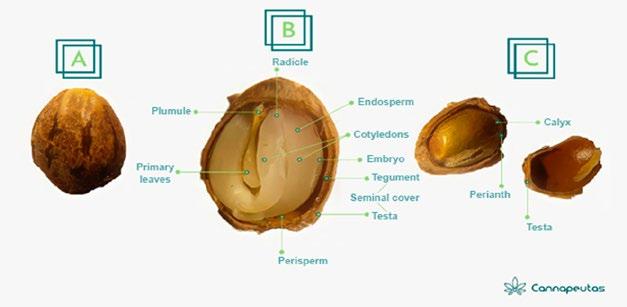
REGULAR SEEDS
Pure genetic seeds, i.e., that have not undergone any type of manipulation and capable of developing plants of excellent quality and exceptionally good production. In addition, they are photo-dependent (or photoperiodic), which means that there must be a change in the photoperiod, a decrease in the hours of light, and an increase in the hours of dark to enter the flowering stage.
Also, these plants can rise female, male, and hermaphrodite plants. Therefore, it is important to know that, if the intention is not the production of seeds, in case of having male plants in the cultivation space, they should be removed so that they do not pollinate the female flowers, and in case of being hermaphrodite, the male flowers should be cut as soon as they are defined. (Piranha, 2020).
39 LET'S TALK ABOUT CANNABIS |
Figure 1. M orphological structure of the Cannabis seed, where a) External view. b) Cannabis seed longitudinal cut. c) External view without testa.
*Depending on the genetics, the color, size, and weight of the seed will vary. [Photo] Jessica Torres, 2021; [Diagram] Izaizel Cruz, 2021.
THE ATTRACTION FOR GROWERS: FEMINIZED SEEDS
Feminized seeds are those obtained from regular plants modified and developed so that their offspring produce only female plants, i.e., growers do not have to wait to know whether their plants will be female or male. In addition, feminized seeds allow them time to learn how to become better growers.
SEED FEMINIZATION PROCESS
This process consists basically in the application of silver nitrate (AgNO3) to female plants, which will lead to the expression of male traits producing modified pollen, which in turn will fertilize females to produce seeds with a high load of female genetic material, and thus, obtaining a high potential of producing only female plants. Likewise, these plants are also photo-dependent, giving a stable and good quality production, being the Indica varieties the ones that present a shorter time in terms of floral development (Piranha, 2020).
DIFFERENCES BETWEEN THE FEMINIZED INDICA AND SATIVA SEEDS
Currently, most Cannabis seeds contain a mixture of both Indica and Sativa genetics, i.e., they are hybrids with characteristics from both species.
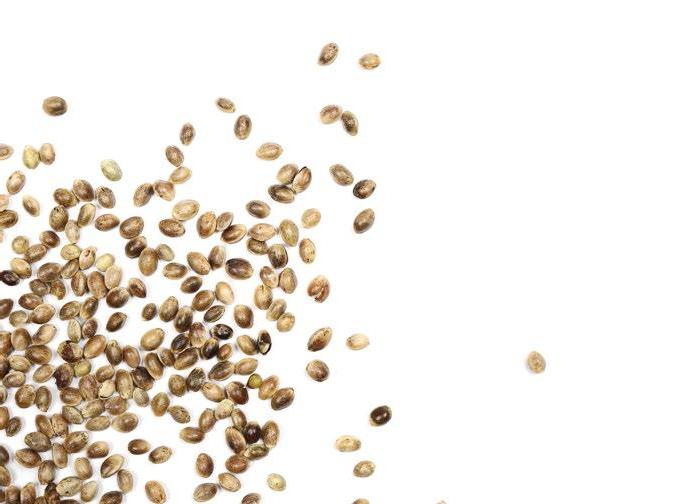
AUTO-FLOWERING SEEDS
By incorporating these genetics in feminized seeds, seeds with faster growth and flowering are obtained. Such plants are not photo-dependent, as their flowering period is determined by the sexual maturity of the plant rather than the decrease of daylight hours. That is, they do not depend on the length of the photoperiod to change from the vegetative to the reproductive stage but begin to flower when they complete a fixed vegetation period (Piranha, 2020).
40
FAST VERSION SEEDS
Fast Version seeds result from the first offspring of a crossing between a male automatic plant and a feminized one. They are those feminized seeds of short flowering. Likewise, these seeds are also called F1 because of the characteristics of the first filial generation produced from this crossing. This first-generation maintains the traits of the photo-dependent feminized plant with a shorter flowering period (Piranha, 2020).
F1 Fast Version® variants are 100% photo-dependent and ultra-fast flowering including some of the most appreciated genetics of the Sweet Seeds® catalog. These new genetics are F1 hybrids. These marijuana plants are ready to be harvested in indoor crops only 6 to 7 weeks after the change of photoperiod to 12 hours of light and 12 hours of dark; in outdoor crops, plants are harvested 1 or 2 weeks earlier than the original versions. Due to their fast-flowering, these varieties are quite suitable for cultivation in humid, rainy, high mountainous areas or with cold winters, especially sensitive to fungal attacks, as they manage to anticipate their harvest to the most virulent botrytis (gray mold) that decimate the buds of the longest flowering plants.
How to differentiate between seed varieties?
It is important to highlight that the identification of the seed genetics comes directly from the seed banks because it is not possible to differentiate at a glance between the different seeds of Cannabis sativa. The comparisons between the aforementioned seed varieties are shown in Table 1.

41 LET'S TALK ABOUT CANNABIS |
Table 1. Comparison between different varieties of seeds (indoor crops). Based on Blog Piranha, 2020.

SEEDS USES AND BENEFITS
Hemp seeds and their derivatives such as oil, flour, and powdered protein are considered a superfood due to their nutritional properties; the content in fatty acids, vitamins, proteins, and minerals represent a highly energetic cereal that matches the characteristics of chia, as shown on Table 2 (Fundación CANNA, n.d.; López, 2020).

Studies on hemp flour demonstrated that it contains a higher amount of calcium, potassium, magnesium, but also, great amounts of dietary fiber compared to the wheat flour control. Despite the severe loss of these compounds due to baking, all bread obtained from hemp products (especially 15% and 25% hemp flour) retained higher amounts of bioactive mineral compounds due to higher initial levels. The hemp products used in the experiments allow us to consider bread variants with higher nutritional value, and thus, incorporate proteins, essential fatty acids, minerals, and dietary fibers into bakery products, improving their quality by substituting a quantity of total flour and thereby, decreasing the total gluten
content. For this reason, these bread variants are recommended for people with low gluten tolerance (Bădărău et al., 2018).
In terms of the chemical composition, hemp products contain polyunsaturated fatty acids (PUFA) of around 70% to 80%, with low concentrations of saturated fatty acids (SFA). Among PUFA, linoleic acid was the most representative fatty acid with about half of the total fatty acids. The second prominent PUFA was α-linolenic acid (ALA), commonly known as Omega 3, thus, hemp oil represents a particularly rich source of these two fatty acids, known as Essential Fatty Acids (EFA), as they cannot be synthesized by mammals and
43
Table 2. Nutritional values of Cannabis and Salvia hispanica seeds (López, 2020).
LET'S TALK ABOUT CANNABIS |
therefore, must be acquired in the diet since they are necessary to maintain a healthy human life (Farinon et al., 2020).
Hemp products' high concentration of PUFA, such as Omega-3, has proven to reduce the risk of cardiovascular diseases, the proliferation of different types of cancer, and beneficial effects in the treatment of inflammatory diseases such as rheumatoid arthritis, psoriasis, or Crohn's disease. In addition, the ratio Omega-6 and Omega-3 (n-6/n-3) is favorable since high ratios of Omega-6 to Omega-3 promote the pathogenesis of several diseases, including cardiovascular, autoimmune, and cancer diseases while decreasing this ratio, i.e., increased Omega-3 delivers beneficial effects on health (Fundación CANNA, n.d.).
In 2009, Callaway et al. conducted an experiment in patients with atopic dermatitis, where the efficiency of hemp oil compared to extra virgin olive oil was measured. The experiment was carried out for eight weeks in a group of 20 patients, of whom, only 16 completed the treatment consisting of consuming 30 mL of the study oil, as well as avoiding nutrient supplements, steroids (e.g., skin creams), oral cyclosporine, asthma medications, or solariums during the study and 1 month prior. Preliminary results confirm an improvement in skin after the daily ingestion of small amounts of hemp oil for a relatively short period.
In addition, studies demonstrate that Omega-3 could help solve problems caused by particulate matter pollution with diameters of less than 2.5 microns (2.5 PM), such as cardiovascular diseases, one of the main causes of death
around the world. Researchers performed experiments on mice exposed twice a week for 6 weeks to 2.5 PM, showing the presence of a large number of PM particles in the spleen, liver, brain, kidneys, testes, and lung. Several approaches were considered to minimize such effects and found that simple supplementation with Omega-3 fatty acids proved to be effective, as a significant reduction in local and systemic inflammation was observed, significantly decreasing lung inflammation, treating, and preventing health issues caused by PM pollution. Omega-3 supplementation was effective both as prevention (pre-exposure) and intervention (post-exposure). From where is it more convenient to take Omega-3? If we take into account that it could be produced through a sustainable crop that enriches soils and captures carbon, in addition to being low in saturated fatty acids and having the highest total phenolic content and antioxidant activity (compared to other vegetable oils), both playing a key role in reducing the risk of cancer, alleviating systemic inflammation, which acts as a powerful antioxidant and promotes free radical scavenging, the introduction of hemp seeds and hemp seed oil could be a very practical and effective measure in our diet to protect us from air pollution (Bagar, n.d.).
Although most vegetable oils have at least one of the essential fatty acids, it is unusual for them to contain such high amounts of both, but it is also unusual for them to be in a ratio of about 3:1 Omega-6/Omega-3, this being the recommended ratio for human intake. The number of fatty acids present in several vegetable oils is shown in Table 3 (Fundación CANNA, n.d.).
44 | LET'S TALK ABOUT CANNABIS
In addition, it contains unsaponifiable matter, about 1.8 – 1.92% of the total oil, and the most relevant compounds are tocopherols and phytosterols that can reduce the risk of cardiovascular disease, cancer, and age-related macular degeneration. Besides presenting antioxidant activity, tocopherols are known to be important antioxidants with a positive effect on the oxidative stability of oils (Fundación CANNA, n.d.).
The most abundant isomer is γ-tocopherol, followed by α-, δ- y β-tocopherols. The α-isoform is considered the only bioactive form of tocopherol, i.e., the form with vitamin E activity in the human body. But what is the daily intake of vitamin E as α-tocopherol? The European
Food Safety Authority (EFSA) has established an average intake of 13 mg/day for men and 11 mg/ day for women. Studies demonstrate that the content of α-tocopherol in hemp seeds can reach up to 5 mg/100 g of seeds. One serving of hemp seeds equals 30 g., therefore, the daily intake of one serving of hemp seed can contribute to satisfying up to 14% for women and 12% for men of vitamin E (Farion et al., 2020).
Also, several studies show benefits of hemp seeds as a livestock supplement, as is the case of Neijat et al., who in 2016 found that, as a consequence of dietary supplementation with hemp seeds and hemp seed oil to the diet of laying hens, the content of alpha-linolenic acid (ALA) increased in a dose-dependent manner.

45 LET'S TALK ABOUT CANNABIS |
Table 3. Composition of fatty acids in different vegetable oils (Fundación CANNA, n.d.).
USES OF ESSENTIAL HEMP OIL
Essential oils for human use can be extracted from the seeds as they have 30% oil content, allowing that about 50% of the global hemp oil market be concentrated in the food industry and nutritional supplements, as it can be used as a flavoring additive; in fact, it has a peculiar nutty flavor and is currently incorporated in many food preparations such as bread, cakes, cookies, vegetable milk, ice creams, etc. (Gabrielová, n.d.). Meanwhile, the other half of the world trade is focused on cosmetic applications such as soaps, shampoos, creams, etc., since it is widely used in relaxation massages with anti-inflammatory effects (Gabrielová, n.d.). But that is not all, it also has other industrial uses such as hemp diesel, a high-quality fuel. In addition, hemp seed oil is historically known to have been used as a fuel for lighting before the advent of electricity (López, 2020).
EXTRACTION METHODS
Vegetable extraction is generally a solid-liquid extraction, also called leaching, whose objectives are:
• Concentrating the active substance
• Obtaining easily digestible substances
• Removing undesirable substances (bad tastes, odors, irritating or toxic substances)
There are several extraction methods, the most common are shown in Table 4 (López, 2020).

46 | LET'S TALK ABOUT CANNABIS
Table 4. Comparison between different types of extraction, modified from López, 2020.
References:
1. Bagar, T. (s. f.). Semillas de cáñamo Vs. contaminación del aire. Fundación CANNA: Investigación y análisis de Cannabis. Recuperado de: https://www.fundacion-canna.es/ semillas-de-canamo-vs-contaminacion-del-aire
2. Bădărău, C., Apostol, L., & Mihaila, L. (2018). Effects of hemp flor, seeds and oil additions on bread quality. Journal of Engineering Research and Application, 8, 73–78. https:// doi.org/10.9790/9622-0805037378
3. Blog Piranha (2020). Cannabis sativa: Tipos de semillas. Recuperado de: https://piranha.cl/blog/ciencia
4. Callaway, J., Schwab, U., Harvima, I., Halonen, P., Mykkänen, O., Hyvönen, P., & Järvinen, T. (2005). Efficacy of dietary hempseed oil in patients with atopic dermatitis. Journal of Dermatological Treatment, 16(2), 87–94. https://doi.org/10.1080/09546630510035832

5. Farinon, B., Molinari, R., Costantini, L., & Merendino, N. (2020). The seed of industrial hemp (Cannabis sativa L.): Nutritional Quality and Potential Functionality for Human Health and Nutrition. Nutrients, 12 (7), 1935. Recuperado de: https://doi.org/10.3390/nu12071935
6. Fundación CANNA. (s. f.). Beneficios nutricionales de las semillas de cáñamo. Fundación CANNA: Investigación y análisis de Cannabis. Recuperado de: https://www.fundacioncanna.es/beneficios-nutricionales-semillas-canamo
7. Gabrielová, H. (s. f.). Cáñamo vs Marihuana. Fundación CANNA: Investigación y análisis de Cannabis. Recuperado de: https://www.fundacion-canna.es/canamo-vs-marihuana
8. López, J. (2020). Diseño de un sistema de extracción de aceite de cáñamo para su uso en la industria farmacéutica y cosmética. UPV. Recuperado de: https://riunet.upv.es/
9. Neijat, M., Suh, M., Neufeld, J., & House, J. D. (2015). Hempseed Products Fed to Hens Effectively Increased n-3 Polyunsaturated Fatty Acids in Total Lipids, Triacylglycerol and Phospholipid of Egg Yolk. Lipids, 51(5), 601–614. https://doi.org/10.1007/s11745-015-4088-7
10. Torres, J. (2021). Morfología de la semilla de Cannabis [Fotografía: Fig.1.].
47 LET'S TALK ABOUT CANNABIS |
A BRAIN IMPLANT CAPABLE OF WRITING THOUGHTS
 Written by Dr. Carmen de la Rocha D. in Plant Biotechnology, CINVESTAVIrapuato -Master of Science in Biochemical Engineering, ITC –Bachelor of Science in Nutrition and Food Science, IBERO, León -Supervisor of the Department of Development CidVID -Professor of Subject B, CUCS UdeG Member of the National System of Researchers, level I.
Written by Dr. Carmen de la Rocha D. in Plant Biotechnology, CINVESTAVIrapuato -Master of Science in Biochemical Engineering, ITC –Bachelor of Science in Nutrition and Food Science, IBERO, León -Supervisor of the Department of Development CidVID -Professor of Subject B, CUCS UdeG Member of the National System of Researchers, level I.
Sources:
1. Willet R FR, Avasino DT, Hochberg LR, Henderson JM, Shenoy K V. High-performance brain-to-text communication via handwriting. Nature. 2021;593:249–54.
2. Brain Computer Interface Turns Mental Handwriting into Text on Screen [Internet]. Howard Hughes Medical Institute. 2021. Available from: https:// www.hhmi.org/news/brain-computerinterface-turns-mental-handwritinginto-text-on-screen
Researchers at Stanford University have developed an artificial intelligence brain implant system capable of interpreting brain impulses and translating them into text in real-time to help people write with their minds. They achieved this by implanting two small electrodes in the area of the brain that controls the hands, arms, and fingers into an algorithm that translates the signals into letters, which appear on a computer screen.
One of the major findings of the research was that, although patients had lost mobility many years ago due to spinal cord injury, they reported that their brains had not lost the ability to write because they remembered how to do it. With this device, they were able to type up to 90 characters per minute with 94.1% of accuracy. Such figures, the authors mention, are comparable to the speed at which individuals type on their smartphones, which is 115 characters per minute, while a healthy adult can type about 23 words per minute, making these advances highly significant.
Although thought-powered communication is still in its early stages of development and research, this device could help people with motor disabilities, such as paralysis, to communicate through thoughts. Nevertheless, the researchers plan to take the project to a second level, involving a large number of participants, and even plan to test it with people who have lost the ability to move and speak(1,2).
| BUSINESS & DEVELOPMENT
Written by Jennefer Iveth Mercado Cerda. Student of the Master of Public Health, Bachelor of Public Health, Researcher in the Department of Development at CidVID.
WORLD’S FIRST EXOSKELETON FOR CHILDREN WITH SPINAL MUSCULAR ATROPHY
Spain's High Council of Scientific Investigations (CSIC) has patented and authorized the international marketing of the first pediatric exoskeleton which helps patients suffering from Type 2 Spinal Muscular Atrophy. This Spanish invention has just received the CE marking, granted by the Spanish Medicines and Health Products Agency, which means that it can now be marketed.

The device called ATLAS 2030 would help 17 million children around the world; it weighs 12 kg and is made of aluminum and titanium. As of 2016, the invention was in the pre-clinical phase, however, years of clinical trials have demonstrated that its intensive use succeeds
in delaying the musculoskeletal complications associated with both, Spinal Muscular Atrophy (SMA) and cerebral palsy.
At first, the company requested EU aid for the industrialization of the project, but when it was denied, it started a crowdfunding campaign. Shortly thereafter, the funding from the European Commission’s SME was received, which supported that the device complied with the regulations for making it available in the market. Currently, its promotors have started a financing round: “we plan to seek greater financial muscle so that the exoskeleton be available in all autonomous communities, but also overseas,” says the project leader Elena García Armada.
Sources:
1. Redacción NCYT(13 de mayo de 2021). Retrieved from: https://www.20minutos.es/noticia/4694355/0/primerexoesqueleto-infantil-puede-comercializarse-ayudar-17-millonesninos/?autoref=true
2. Araceli Guede (12 de mayo de 2021). Retrieved from: https://www.20minutos.es/noticia/4694355/0/primerexoesqueleto-infantil-puede-comercializarse-ayudar-17-millonesninos/?autoref=true
POTENTIAL BONE MARROW STEM CELL TREATMENT FOR PATIENTS WITH TYPE 2 DIABETES MELLITUS
Type 2 diabetes mellitus (DM), the most common type of diabetes in the world, is a disease that prevents the body from producing enough insulin or making proper use of insulin, allowing high levels of glucose in the blood and not enough in the cells to be used as energy. This disease has become a worldwide problem, and in Mexico, the incidence of cases has been increasing every year.
A clinical study performed at the Vinmec Research Institute of Stem Cell and Gene Technology, located in Hanoi, Vietnam, has shown that the use of mesenchymal/ stromal stem cells, derived from the patient’s bone marrow could represent a good therapy option for the treatment of type 2 DM.

The effects, although currently for the short-term, were observed in non-obese patients younger than 10 years old with a diagnosis of type 2 DM (body mass index less than 23 kg/m2). A reduction in blood glucose concentration was seen during the first 3 months post-administration, as well as a temporary reduction in the dosage of their diabetes medication. However, glycosylated hemoglobin values returned to previous average levels after six months. In addition, this line of treatment was proven to be safe as there were no serious adverse events during the study nor the subsequent one-year follow-up of patients.
Written by Jocelyn Robles Biotechnology engineer
Sources: http://revistamedica.imss.gob.mx/editorial/index.php/revista_medica/article/view/390/877
https://www.niddk.nih.gov/health-information/informacion-de-la-salud/diabetes/informacion-general/que-es/ diabetes-tipo-2 https://stemcellsjournals.onlinelibrary.wiley.com/doi/full/10.1002/sctm.20-0506 https://www.genengnews.com/news/type-2-diabetes-patients-can-benefit-from-stem-cell-transplants/
50
| BUSINESS & DEVELOPMENT
by training, with a concentration in molecular biology from Tec de Monterrey. She is currently a Specialist in Initiation and Closure of Studies at CidVID Investigación Biomédica.
NITROSAMINE: A PUBLIC HEALTH ISSUE

The document published by the Food and Drug Administration (FDA) entitled "Control of nitrosamine impurities in human drugs; Guidance for Industry; Availability", updated February 24, 2021, is an international guidance that recommends steps that manufacturers of active substances and pharmaceutical products (drugs) should take to detect and prevent unacceptable levels of nitrosamine impurities in drug products.
The guide also describes conditions that can introduce nitrosamine impurities into drug production processes. The unexpected and fairly recent finding of nitrosamine impurities (which are potential human carcinogens) in drugs such as angiotensin II receptor blockers (ARBs or A2RBs), or sartans, ranitidine, nizatidine, and metformin, has made clear the need for a risk assessment strategy for the potential formation of nitrosamines in any pharmaceutical product.
According to this guidance, pharmaceutical manufacturers should take the following steps in order to mitigate nitrosamine in their marketed products:
• Evaluate nitrosamine impurities in drug substances, marketed and approved products, and pending applications. Risk assessments should be conducted promptly based on drug prioritization. Manufacturers must submit the risk assessment documentation upon request.
• Perform confirmation testing when nitrosamine impurities are identified. Due to the physical-chemical properties of nitrosamines, analytical methods must include specificity, excellent chromatographic separation, and high-detection capability.
• Changes implemented to prevent or reduce impurities in active substances and drug products must be reported to agencies, which includes the submission of the Drug Master File (DMF) under 21 CFR 314.420 (c) standard, changes to approved applications under 21 CFR 314.70 and 314.97 standards and pending applications under 21 CFR 314.60 and 314.96 standards.
In the United States, to ensure the safety of drug supply, confirmatory testing, and submission of required changes to drug applications must be completed within 3 years of the publication date of this guidance. The implementation schedule includes examining the root cause of contamination/formation of these compounds, identifying changes to eliminate the root cause, and confirming that the proposed changes will minimize the risk of contamination or formation with no adverse effects.
CENEBA's General Director. A biochemist, expert in manufacturing processes of biotechnological drugs and the field of bio-analytics. She has 30 years of experience in the pharmaceutical industry in the areas of product development, regulatory affairs, and process validation.

51
Dra. Marleby García González
CLINICAL RESEARCH & PHARMACOLOGY |
From now on, drug product manufacturers must comply with the guidance to potentially eliminate the risks of nitrosamine impurities in their marketed products.
WHAT ARE NITROSAMINES?
Nitrosamines, or more correctly, N-nitrosamines, refer to any molecule containing the nitroso functional group. These molecules are of concern because nitrosamine impurities are human carcinogens. Although these impurities are also present in some foods and potentially in drinking water supplies, their presence in medicines is considered unacceptable.
The presence of nitrosamines remains an issue in the human environment. Some of the most common sources of nitrosamines are tobacco (smoked or chewed), rubber products, cosmetics (creams, lotions, shampoos), metal cutting liquids, pesticides, and certain and well-identified pharmaceutical products. Nitrosamines are also present in food like bacon, beer, and canned fish. They can be formed when meat is heated at high temperatures. Nitrosamines, including NDMA, NDEA, and NPYR, among others, can also be found in drinking water.
WHY ARE THEY PRESENT?
The formation of nitrosamines is generally only possible when secondary or tertiary amines react with nitrous acid. By itself, nitrous acid is unstable, however, it can be formed in situ from nitrites (NO2) under acidic conditions.
In terms of sartan compounds, most contain a tetrazole ring and the formation of this ring involves the use of sodium nitrite. Coincidently, the solvents used are amines or contain traces of amines,

52
| CLINICAL RESEARCH & PHARMACOLOGY
and this probably causes the NDMA and NDEA nitrosamines, observed in them. The origins of the NDMA content in ranitidine batches are currently unclear.
However, during investigations, it was also concluded that the potential of nitrosamine impurity content was wider than just the simultaneous presence of nitrites and amines in the synthesis of the active pharmaceutical ingredient (API).
Evidence suggests that sources of nitrites or amines, as unintended contaminants from starting materials, reagents, and solvents, such as dimethylamine (DMF), may also provide circumstances in which nitrosamines can be formed. Carryover of nitrites or amines from later stages can also provide opportunities for the formation of these impurity compounds. Particularly, contamination from external sources has been identified as a highly likely source of nitrosamine input. Especially, contamination from the use of recycled materials and solvents that already contain levels of nitrosamines from downstream processes. An example is the use of recycled DMF, which is quenched with sodium nitrite to remove residual azide as part of the recovery process in the synthesis of some APIs. In addition, the recycling materials and solvents are often outsourced to third parties who may not have implemented adequate controls. Materials and solvents can be crossed-contaminated with nitrosamines or impurities that could react to form nitrosamines if the equipment is not thoroughly cleaned between customer batches.
Importantly, these additional mechanisms, in particular, cross-contamination, may affect several products that would not otherwise be expected to be at risk of nitrosamine formation by their natural synthesis route. These broader concerns have led regulatory agencies such as the EMA, FDA, and recently, COFEPRIS, to request that finished pharmaceutical product registrants conduct a risk assessment to determine the risk of nitrosamine content and verify that their drugs are free of these harmful impurities.
TOXICITY
Both NDMA and NDEA belong to the so-called “cohort of concern”, a group of highly potent mutagenic carcinogens that have been classified by the International Agency of Research on Cancer of the World Health Organization (WHO) as probable human carcinogens. Only limited impurity-specific toxicity data are available for NDMA and NDEA. Based on this information, most major regulators have adopted acceptable intermediate inputs for these specific impurities to provide a basis of safety for the consumption of drugs for the treatment of chronic diseases such as hypertension. Due to their structural similarity, international regulators consider that nitrosamines NDIPA, NEIPA, and NMBA should exhibit a similar toxicological profile to that of the NDMA and NDEA.
MOST RECOMMENDED METHODS OF ANALYSIS FOR THE DETECTION AND QUANTIFICATION OF NITROSAMINES
The low levels at which nitrosamine impurities occur create challenges for laboratory analysis testing, with few having access to adequate technologies. Several analytical methods that can be considered when determining the nitrosamine content in APIs and drugs have been published, primarily by the FDA and the European Medicines Agency (EMA).
The use of high-performance liquid chromatography-mass spectrometry (LCHRMS) technology has been recommended for its advantages of low detection limits and acceptable quantification. Other technologies also recommended, however, less used are the gas chromatography-mass spectrometry coupling (GC-MS) and the high-performance liquid chromatography (HPLC). In this order, the technologies are losing analytical sensitiveness in the methods described so far.
53
CLINICAL RESEARCH & PHARMACOLOGY |
In Mexico, an analytical monograph for the quantification of these impurities has been evaluated in consultation with the Mexican Pharmacopoeia, which is expected to be published soon and become mandatory.

The CENEBA (National Center of Applied Bioprocesses Studies) is one of the few laboratories in the region with a validated analytical method capable of quantifying six different nitrosamines within the standards accepted by the most prominent and strict regulatory agencies.
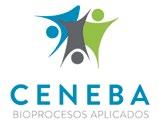
In this Mexican laboratory, both technologies (LC-HRMS and GC-MS) are applied for this purpose and, depending on the nature of the sample to be analyzed, meet the expected detection and quantification limits requirements. The technology implemented at CENEBA reproduces the principles of international methods and with it, the methodological suitability of the matrices of regional medicines in Mexico and Latin America.

54
CORRECTIVE ACTION TO PROTECT PUBLIC HEALTH
Since 2018, WHO, EMA, and FDA issued public health alerts followed by guidance documents for manufacturers of APIs and pharmaceutical products on acceptable levels of nitrosamine impurities in different drugs.
An effective strategy will support manufacturers to identify points in their processes with the potential to introduce impurities, along with appropriate methods to detect, measure, and control them. Both manufacturers and global regulators play a role in ensuring that the levels of impurities remain within acceptable limits. To do so, they require tools to test and evaluate the risks related to nitrosamine impurities.
The FDA and EMA have already established deadlines to assess the manufacturing processes of all approved or marketed pharmaceutical products. The FDA establishes that manufacturers must complete a risk assessment by October 2021. If they identify one or more risk points where nitrosamines are potentially being introduced, the impurities should be confirmed by specific and sensitive analytical test methods. Then, manufacturers must report the changes carried out to mitigate the risk before 2023.
RISK TO GLOBAL DRUG SUPPLY
Beginning in 2018, the FDA and the manufacturers of the medicines worked together to protect patients by quickly removing ARBs from the market containing unacceptable limits of nitrosamines. However, the recalls resulted in a chronic drug shortage situation, where patients were at risk of not getting the medications, they needed to control their high blood pressure. In 2019, the FDA responded by prioritizing the review of a new generic product of valsartan. Its approval helped to alleviate the shortage of this critical drug resulting from multiple recalls of generic valsartan products.
Companies are responsible for understanding their manufacturing processes, including identifying and preventing the presence of unacceptable levels of impurities. Nevertheless, the global nature and complexity of the pharmaceutical supply chain make this an overwhelming task. Raw materials, excipients, substances, and finished drug products come from different countries around the world. The complexity of the manufacturing process for some drugs compounds the challenge. An inadequate risk assessment and control strategy can have dire consequences in the short and long term.
55 CLINICAL RESEARCH & PHARMACOLOGY |
RISK OF NOT TRUSTING IN MEDICINES

ARBs and other drugs containing varying levels of nitrosamines are used to treat a wide range of common medical conditions. Valsartan, losartan, and irbesartan are anti-hypertensives drugs. Ranitidine is used to treat ulcers and acid indigestion. Nizatidine is also a treatment for stomach and intestinal ulcers. Metformin is used to treat high levels of sugar in the blood. Rifampicin and rifapentine are antibiotics used to treat tuberculosis. Given the prevalence of the conditions for which these drugs are used, analytical detection and monitoring of nitrosamine levels in processes and final products quickly rose to the level of public health imperative.
With each news headline about affected drugs, the public’s confidence in the safety of their medicines deteriorated. Patients debated whether they were more at risk by taking their medications than if they discontinued them. The FDA and healthcare professionals urged patients not to change their medications regimes unless instructed by their physicians because the interruption was potentially more dangerous to their health than exposure to unacceptable levels of nitrosamine exposure. When the list expanded to include non-ARB drugs, concerns grew exponentially among consumers. The drugs in question are found in the daily medication regimens of hundreds of millions of people worldwide.
Trust in medicine is difficult to measure, but the impact of the lack of it has been seen over and over around the world: the length and quality of people’s lives are decreased because, out of fear, they choose to quit life-saving treatments. For that reason, this is an issue of high national and international priority.
56
| CLINICAL RESEARCH & PHARMACOLOGY

VIRTUAL REALITY:

SCIENCE FICTION IS MORE REAL THAN EVER
Videogames have long been an industry on par with the movie industry. Today, many video games have the artistic, technical, or narrative quality of any Oscar-winning award film, but with extra magic: you are there, you provide the sense and rhythm to that narrative, you make the decisions, control, and interact with that world, and you belong to it. This industry has taken advantage of a resource that, although not entirely new, has grown enormously in the 21st century. We are talking about Virtual Reality (VR) and Facebook's Oculus or PlayStation googles, but can this be used beyond videogames? Of course, and an impressive future is ahead.
Let's review some of the uses it already has and which are more or less known. For example, in medicine, apart from simulators to practice surgeries, the Spanish National Research Center for Scientific Research (CSIC) was able to reduce the effects of Parkinson's disease in several patients with depVR treatments; patients perform daily activities such as having breakfast in virtual reality, showing improvements after a short time. In industries like the automotive, there is a concept called digital twins. This consists of having a virtual “twin” of some object or product and experimenting with it before making changes to the physical object.
The game Assassin’s Creed Origins, which is set in ancient Egypt, added a mode intended only for map exploration, so that, with the VR, the game provides you a tour to what the game reconstructed, such as the Library of Alexandria. 360° videos have been particularly useful in activities such as journalism or to walk through a 3D model to better measure spaces and monitor lighting in disciplines such as architecture. These are some current uses for VR.
Now, regarding an extremely specific product, the HTC company has created the Vive Facial Tracker. This device is adapted to VR lenses and works as a face tracker. The device attaches to the googles and, according to HTC, can recognize around 40 facial movements in lips, cheeks, teeth, nose, tongue, chin, and jaw. At the moment, it is only intended to create more detailed avatars, however, it is being discussed how useful it can be in sciences such as criminal psychology, i.e., to identify if someone is lying, nervous, scared, or confident through gestures. While this happens, this invention could be a big step towards social interaction via VR. Maybe we can meet that friend on the other side of the world in a virtual place, recognizing all of his/her gestures.


Communicologist and historian graduated from the University of Guadalajara. Since 2019 he is dedicated to journalism and content creation about video games, technology and “geek culture” on the internet. He was co-founder of the page Operación Gamer and currently his content appears on his page Totherland on Facebook Gaming.

GADGETS |
Mauro Orozco Moreno
All these are things that already exist, be purchased, or tested. What about the future? Nvidia, famous for its graphics cards for PCs and cell phones and its contributions to the world of video games, has an extremely important idea in mind for VR. In a recent interview with Nvidia CEO Jensen Huang, he assures that the future of the company lies in creating a metaverse (omniverse, as he calls it). The idea of this metaverse or alternate universe is to create a virtual world parallel to ours and use it as a sandbox. Would you like to build a train crossing the jungle through the Tehuantepec Isthmus? Well, the Nvidia omniverse would let you see the environmental, commercial, or other impacts or benefits that this Mayan Train could have before building it in the real world.
Nvidia's idea is that companies or governments contract this service so that, when there is a virtual Guadalajara, for example, they can experiment there to see how viable some projects are, to avoid failures, or train works that take six years to complete.

Thus, VR is no longer just science fiction but a tool that can terrify many. As I have mentioned before, it depends on not losing the horizon in our moral compass and not allowing these developments to lead us to a cyberpunk dystopia. For the time being, we can only be excited about what can be achieved with this technology. There is nothing to fear, even with Nvidia’s CEO saying that this metaverse will not only be alternate but will merge with our own universe and with enhanced reality –not to be confused with virtual reality–which we will talk about, perhaps, in the upcoming issues.

Informes: 33 2048 7741


Humberto Orígenes Romero Porras.
Holds a degree in history from the Universidad de Guadalajara. A former Paralympic athlete (20062017), he won a medal at the 2015 Parapan American Games held in Toronto, Canada. A partisan of worthy causes, he is interested in the interconnections between history, literature, and soccer.

GOING THROUGH MOTHERHOOD: LINEA NIGRA AND LA HIJA ÚNICA
Writing these lines first requires a confession: I am not a mother, nor I can be one because I am a man. I am a son and a bad son. I am a man, and for being so, I am a privileged man; I can be a father without any pain, without seeing changes in my body. Thus, the works I analyzed led me to reflect on maternities in the plural. Also, I understood how necessary the reading of these works is for men.
It is important to understand otherness in an increasingly globalized society. Guadalupe Nettel and Jazmina Barrera see pregnancy as the development of an “another being” in women’s bodies. Hence, how painful the reading of La hija única y Linea nigra (The only daughter and Nigra Line) can be for a large part of today’s society, where motherhood is assumed as a state of glorification of women, as a desirable and unavoidable situation.
In La hija única, Nettel intends to tell the story that a friend of her told her. We ignore what place this woman occupies in the story, we do not know her alias. Nettel somehow attempts to create a fictionalization of real events that approaches the chronicle in several moments, without daring to be a non-fictional story.
The narrative links three women: Doris, Alina, and Laura. That is, three ways of understanding motherhood through which Nettel makes a manifesto for the sake of motherhood as desired. If it is not desired, it will not be. The work is surprisingly easy to read, although at certain moments it dangerously falls into an
exercise of self-help literature, as it offers in certain pages positions worthy of an essay, but which do not fit in the novel.
The end of the book may be disappointing after witnessing the wonderful development of Laura, the lead role, a woman remarkably similar to Guadalupe Nettel herself, as she is a writer on the verge of consecration –in this, she differs from the already consecrated Nettel–On the other hand, there is Alina, also an artist who, like Laura, rejected the idea of being a mother; finally, there is Doris, who is perhaps a tribute to Doris Lessing, the English writer who won the Nobel Prize in 2007, whose work The Fifth Son surely inspired La hija única. The European writer does not fit in this comparison between two Mexican authors.
Doris is perhaps the most interesting character and the one who produces the most shocking episodes in the novel. She is already a mother, her husband has passed away, and she has a terrible relationship with her son, little Nico. The three stories sometimes take place in parallel and others, they are linked to show us three ways of facing motherhood, always respecting the principle that maternity will be chosen or it will not be.
Alina faces, if not medical malpractice, then diagnosis errors and clumsy physicians. Herein lies a valuable plea for a humanized medicine. However, Nettel writes notoriously from her ringside seat, being a shortcoming in the novel’s approach to its subject. The most
62
| REVIEW
expensive hospitals in Mexico City are mentioned, actions take place in an affluent neighborhood, and there is no voice for the fourth type of motherhood: the one of the poor women. Being a Mexican work that intends to explore different forms of maternity, the lack of the experience of birth in the IMSS is resented; motherhood carried out under the conditions of our public healthcare system.
On the other hand, we have a quite different approach: Jazmina Barrera offers us a pregnancy journal. A work where chronicle and essay are mixed with great success. The author delivers us the testimony of her pregnancy and her relationship with the writer Alejandro Zambra (author of Poeta chileno).
Barrera’s work does not intend to be an analysis of different forms of motherhood, but a realistic reflection on pregnancy. Therefore, it cannot be reprimand for the same as Nettel. Linea nigra is a journey through a rich variety of readings that the author has been doing in order to understand her situation; works ranging from science to poetry provide the reader with a myriad of experiences that overthrow the romantic myth of pregnancy.
The fragmented structure of the work allows for different voices within the same author. Not every day you wake up in the same mood, and Barrera did not want to be pregnant every day. The author reveals a reality: pregnancy is not comfortable and sometimes, women would like to get rid of that being that drains their energy. And it is not that they do not want to have their baby. Jazmina has decided to have her child, his name will be Silvestre, but that does not stop her from experiencing pain.
Linea nigra is a testimony to the responsible desire to be a mother. It is a constant reflection on all those women who are forced to carry a burden for which they do not consider themselves prepared. In addition, through a journey into the family history, the author revisits the experiences of those who were mothers before her; in this journey, Barrera uncovers for readers the veil of sanctity that shrouded the mothers of the last century. It leads us to understand that the self-sacrificing woman turned into a factory of babies is nothing more than an imposition.
Understanding her motherhood is to understand that other maternities have not been easier either, but it had never been noticed. On the other hand, Linea nigra offers a window to her visits to several gynecologists; with this, we once again point out the need for a humanized gestation process, as well as medical practices. In the end, both works are necessary –and at the same time, are produced– within a context in which the legal interruption of pregnancy, i.e., the right to choose motherhood, is being discussed. Linea nigra and La hija única are great efforts to invite us, to those who can and cannot go through motherhood, to rethink a state that has historically been considered sacred and desirable.
63
Piero Ramos Rasmussen

Author of Transgresión (Ediciones el viaje, 2014), the book of short stories Edén (Carto Pirata, 2015) and El linaje de las sombras (Dorada Apokalypsis, 2017). He holds a degree in Literature and Hispanic Linguistics from the Pontificia Universidad Católica del Perú, with advanced studies in Digital Marketing. In March 2021 his next book of poems will be published: Apuntes del estudiante (Ediciones el viaje, 2021).
DARKER NIGHTS
There are suspiciously darker nights. At dawn, the lighthouse expands its halos and you think you have become too old without being touched by its light. Hungry worms roar, wait, they rumble as if the body were their antagonist. Nights similar to that cinder that does not want to perish and struggles in anguish, even though it is useful no more, and runs while you miserably step on it, and it is crawling on the floor, a stub of light. Nights to put a mirror in front of you. One thinks in the brevity of God, the lasting of sin, the pain of those who dwell in hell. The meowing also hurts, they are cats at large, running away through the prickly joy of felines. There are somber, cruel nights full of regret heard by an invisible confessor. Lonelier, darker, as the suit of dead friends.

| ART & LITERATURE
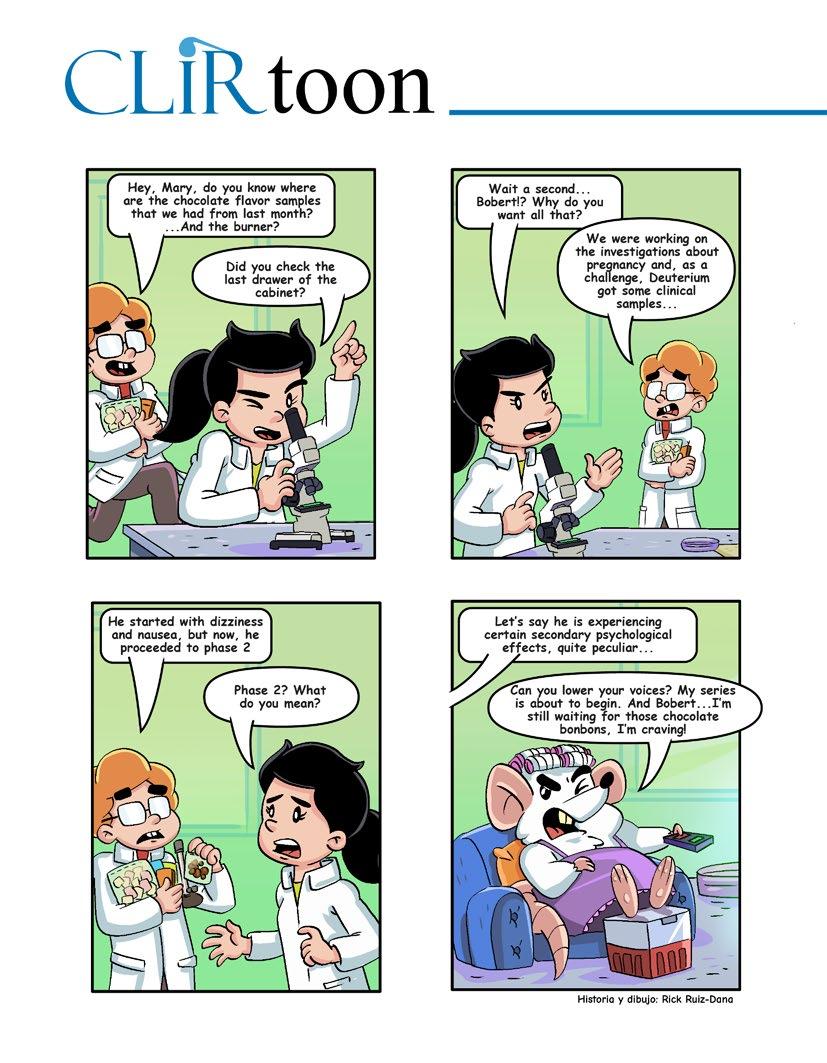








 Written by Jennefer Iveth Mercado Cerda.
Written by Jennefer Iveth Mercado Cerda.


















































 Written by Dr. Carmen de la Rocha D. in Plant Biotechnology, CINVESTAVIrapuato -Master of Science in Biochemical Engineering, ITC –Bachelor of Science in Nutrition and Food Science, IBERO, León -Supervisor of the Department of Development CidVID -Professor of Subject B, CUCS UdeG Member of the National System of Researchers, level I.
Written by Dr. Carmen de la Rocha D. in Plant Biotechnology, CINVESTAVIrapuato -Master of Science in Biochemical Engineering, ITC –Bachelor of Science in Nutrition and Food Science, IBERO, León -Supervisor of the Department of Development CidVID -Professor of Subject B, CUCS UdeG Member of the National System of Researchers, level I.
































